PK A Story of Units®
How Many?
LEARN ▸ Modules 1–6

Student
What does this painting have to do with math?
The American artist Jacob Lawrence is known for his portrayals of everyday African American life. His Migration Series is painted in a modernist style, contrasting vivid colors with shades of brown and black. Lawrence’s work shows the discrimination African Americans faced and the opportunities they found, such as the educational opportunities depicted in panel 58. What are the students writing? Why are they writing numbers?
On the cover
Panel 58 from The Migration Series, 1940–1941
Jacob Lawrence, American, 1917–2000
Casein tempera on hardboard
The Museum of Modern Art, New York, NY, USA
Jacob Lawrence (1917–2000), In the North the Negro had better educational facilities, 1940–1941. Panel 58 from The Migration Series. Casein tempera on hardboard, 12 x 18 in (30.5 x 45.7 cm). Gift of Mrs. David M. Levy. The Museum of Modern Art, New York, NY, USA. © 2020 The Jacob and Gwendolyn Knight Lawrence Foundation, Seattle/Artists Rights Society (ARS), New York. Digital image © The Museum of Modern Art/Licensed by SCALA/Art Resource, NY

Great Minds® is the creator of Eureka Math® , Wit & Wisdom® , Alexandria Plan™, and PhD Science® Published by Great Minds PBC. greatminds.org © 2023 Great Minds PBC. All rights reserved. No part of this work may be reproduced or used in any form or by any means—graphic, electronic, or mechanical, including photocopying or information storage and retrieval systems—without written permission from the copyright holder. Printed in the USA A-Print 1 2 3 4 5 6 7 8 9 10 XXX 27 26 25 24 23 ISBN 978-1-63898-842-7
1 © Great Minds PBC EUREKA MATH2 PK Contents Module 1 Sorting and Counting Topic A: Use Attributes to Match and Sort Family Math . . . . . . . . . . . . . . . . . . . . . . . . . . . . . . . . 7 Topic B: Answer How Many Questions Family Math 9 Lesson 7: Animal Count . . . . . . . . . . . . . . . . . . . . . . 17 Topic C: Match Written Numbers with Sets of Up to 5 Objects Family Math 19 Topic D: Count Out a Set of Up to 5 Objects Family Math . . . . . . . . . . . . . . . . . . . . . . . . . . . . . . . 23 Lesson 16: Number Recipe . . . . . . . . . . . . . . . . . . . 25 Lesson 19: Math Stories . . . . . . . . . . . . . . . . . . . . . . 27 Topic E: Sort to Decompose Family Math 29 Lesson 24: Mystery Eggs 31 Topic F: Match Written Numbers with Sets of Up to 10 Objects Family Math . . . . . . . . . . . . . . . . . . . . . . . . . . . . . . . 33 Topic G: Count Out a Set of Up to 10 Objects Family Math . . . . . . . . . . . . . . . . . . . . . . . . . . . . . . . . 39 Lesson 33: Dinosaur World . . . . . . . . . . . . . . . . . . . . 43 Module 2 Shapes Topic A: Spatial Relations Family Math . . . . . . . . . . . . . . . . . . . . . . . . . . . . . . . 47 Topic B: Analyze and Name Two-Dimensional Shapes Family Math . . . . . . . . . . . . . . . . . . . . . . . . . . . . . . . 49 Topic C: Build and Compose Two-Dimensional Shapes Family Math . . . . . . . . . . . . . . . . . . . . . . . . . . . . . . . 59 Topic D: Analyze Three-Dimensional Shapes Family Math . . . . . . . . . . . . . . . . . . . . . . . . . . . . . . . 61 Lesson 14: Puppet’s Picture . . . . . . . . . . . . . . . . . . . 67
© Great Minds PBC 2 PK EUREKA MATH2 Module 3 Parts and Patterns Topic A: Compose and Decompose Shapes and Numbers Family Math 71 Lesson 1: How Many Parts? 73 Lesson 2: Bunny Puzzles . . . . . . . . . . . . . . . . . . . . . 75 Lesson 3: Decompose 3 . . . . . . . . . . . . . . . . . . . . . 79 Lesson 4: Decompose 4 . . . . . . . . . . . . . . . . . . . . . 81 Lesson 5: Decompose 5 . . . . . . . . . . . . . . . . . . . . . 83 Topic B: Use Structure to Explore Numbers 6–10 Family Math 85 Lesson 9: Decompose 6 and 7 (Optional) 91 Lesson 10: Decompose 8 and 9 (Optional) . . . . . . 95 Lesson 11: Decompose 10 (Optional) . . . . . . . . . . . 99 Topic C: Analyze the Count Sequence Family Math . . . . . . . . . . . . . . . . . . . . . . . . . . . . . . 101 Topic D: Use Structure to Analyze Patterns Family Math 105 Module 4 Ways to Compare Topic A: Describe Size Family Math . . . . . . . . . . . . . . . . . . . . . . . . . . . . . . 109 Lesson 1: Big or Small . . . . . . . . . . . . . . . . . . . . . . 115 Topic B: Compare Heights and Lengths Family Math 117 Topic C: Compare Weights Family Math . . . . . . . . . . . . . . . . . . . . . . . . . . . . . . 127 Lesson 11: Compare Weights . . . . . . . . . . . . . . . . 133 Topic D: Compare Sets Family Math 135 Lesson 14: More or Fewer 141 Topic E: Reason About Comparisons Family Math . . . . . . . . . . . . . . . . . . . . . . . . . . . . . . . 143 Lesson 20: Explore Area (Optional) . . . . . . . . . . . 145
3 © Great Minds PBC EUREKA MATH2 PK Module 5 Math Stories Topic A: Use the Count Sequence to Add and Subtract 1 Family Math 149 Lesson 2: 1 Less 151 Lesson 5: Market Math . . . . . . . . . . . . . . . . . . . . . 153 Topic B: Represent Addition Stories Family Math . . . . . . . . . . . . . . . . . . . . . . . . . . . . . . 155 Lesson 6: Dinosaur Splash . . . . . . . . . . . . . . . . . . 161 Topic C: Compose and Decompose Numbers in More than One Way Family Math . . . . . . . . . . . . . . . . . . . . . . . . . . . . . . 163 Lesson 11: Break Apart 5 . . . . . . . . . . . . . . . . . . . . 165 Topic D: Represent Subtraction Stories Family Math 167 Lesson 15: Under the Sea 173 Topic E: Extend and Create Patterns Family Math . . . . . . . . . . . . . . . . . . . . . . . . . . . . . . . 175 Lesson 21: Create Patterns . . . . . . . . . . . . . . . . . . 177 Module 6 Math in Play Topic A: Project: Create a Business Family Math . . . . . . . . . . . . . . . . . . . . . . . . . . . . . . 181 Learn: Investigate and Elevate the Math . . . . . . . 187 Land: Reflect and Share the Learning . . . . . . . . . 195 Topic B: Project: Plan a Celebration Family Math . . . . . . . . . . . . . . . . . . . . . . . . . . . . . . 197 Launch: Pose a Question, Generate Ideas, and Come to a Consensus . . . . . . . . . . . . . . . . . . 199 Learn: Investigate and Elevate the Math . . . . . . . . 201 Topic C: Project: Care for Our Space Family Math . . . . . . . . . . . . . . . . . . . . . . . . . . . . . . 205 Launch: Pose a Question, Generate Ideas, and Come to a Consensus . . . . . . . . . . . . . . . . . . 207 Learn: Investigate and Elevate the Math . . . . . . . . 209 Credits . . . . . . . . . . . . . . . . . . . . . . . . . . . . . . . . . . . 213 Acknowledgments . . . . . . . . . . . . . . . . . . . . . . . . . . 217
A Story of Units® How Many? ▸ PK LEARN Module 1 Module 2 Module 3 Module 4 Module 5 Module 6 Sorting and Counting Shapes Parts and Patterns Ways to Compare Math Stories Math in Play
FAMILY MATH
Use Attributes to Match and Sort
Dear Family,
This newsletter will keep you up to date on what we are learning during math time. Use what you read to help your family talk about math and look for math around your home and community. A Family Math newsletter will come home every time our class begins a new topic.
To begin the year, students learn to match and sort objects into groups by color, size, shape, number, or type. After they make groups, students practice explaining how they sorted the objects.

Words We Are Learning
At-Home Activities
Be a Helper
The bears have the same color and shape, but they are different sizes. One bear is short, and one bear is tall.
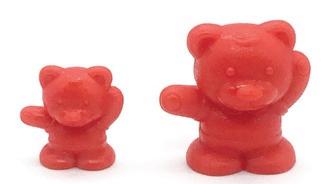
These two socks are exactly the same. They match !
Invite your child to help with daily sorting activities, such as

• matching socks when doing laundry,
• sorting silverware when putting them away, and
• sorting groceries into items that need to go in the fridge and items that do not.
House Hunt
Work together to hunt for matching items around the house. After you choose items, consider asking these questions:
• What is the same?
• What is different?
• Do they match?
© Great Minds PBC 7 Module 1 Topic A
match notice sort wonder
Sorting
As they think about how objects are the same and different, students begin to focus on attributes such as size, shape, color, and use. Once students place objects into groups, they can practice counting to tell how many are in each group. This activity prepares students to sort and describe data in kindergarten.
Items are sorted into two groups: markers and crayons.
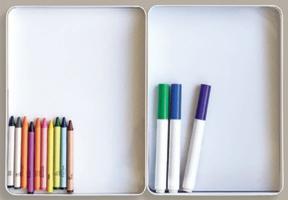

Literature Connection
Consider reading the following books about sorting. Reading can help your child make connections and spark conversations about their learning. These books may be available at your local library or online.


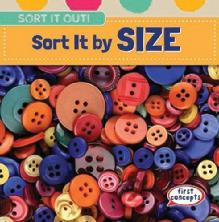 by Emmett Alexander
by Stuart J. Murphy by Jenny Sue Kostecki-Shaw
by Emmett Alexander
by Stuart J. Murphy by Jenny Sue Kostecki-Shaw
8 PK ▸ M1 ▸ TA EUREKA MATH2 FAMILY MATH ▸ Module 1 ▸ Topic A © Great Minds PBC
FAMILY MATH
Answer How Many Questions


Dear Family,
Students learn to count groups of objects to answer how many questions. Counting each object only once can be challenging, especially when objects are not lined up neatly. Students practice using two strategies (touch and count, and move and count) to help them organize and count accurately.
Words We Are Learning
Students discover as they practice counting objects that placing the objects in a line can help them count each object only once.
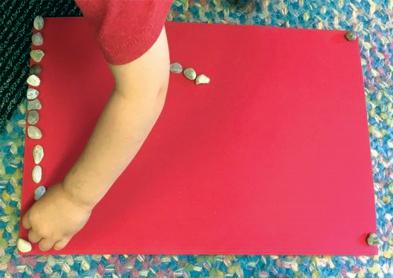
At-Home Activities


Mini-book
Look at How Many? with your child (provided with this letter).





As you look at the book together, ask your child questions such as the following:
• How many?
• What groups do you see?
Are There Enough?
Are There Enough? is an idea that children are familiar with from activities such as setting the table, playing a board game, or sharing with siblings or friends. As your child participates in everyday tasks, have them practice counting out enough of the items you need for the tasks by using the strategies they learned in class.
How Many?
Do we have enough plates for dinner?
© Great Minds PBC 9 Module 1 Topic B
count enough line
MY COUNTING STORY
Strategies for Counting
Students learn two counting strategies to help them count accurately and to find how many are in a group.
Touch and Count
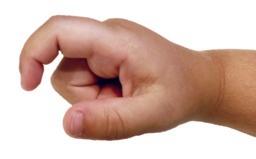
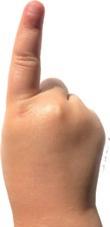
Say the number while touching the object. This strategy works best when the objects or pictures being counted are in a line.
Move and Count
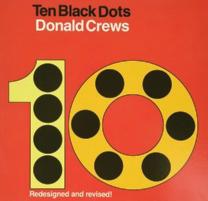
Say the number while moving the object away from objects that have not yet been counted. This strategy is good for keeping track of what has been counted when the objects can be moved.
Literature Connection
Consider reading the following books about numbers. Reading can help your child make connections and spark conversations about their learning. These books may be available at your local library or online.
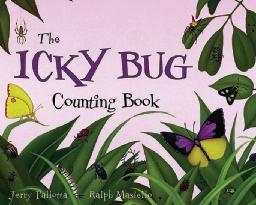

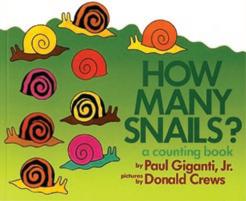 Paul Giganti, Jr. by Christopher by Donald Crews by Jerry Pallotta Danielson
Paul Giganti, Jr. by Christopher by Donald Crews by Jerry Pallotta Danielson
10 PK ▸ M1 ▸ TB EUREKA MATH2 © Great Minds PBC
by FAMILY MATH ▸ Module 1 ▸ Topic B
“1” “1”
Mini-book Directions
Cut along the outer dashed lines of both pages.
Fold along line 1 (vertical line) of both pages.
Fold along line 2 (horizontal line) of both pages. Position page 1 so the cover is facing you. Position page 2 so the pages are in the correct orientation. (Use page 1 as a guide.)
Insert the spine of page 2 inside the spine of page 1 with the cover on the outside facing you. Tape, staple, or glue the spines together.
EUREKA MATH2 PK ▸ M1 ▸ TB © Great Minds PBC 11 Module 1 ▸ Topic B ▸ FAMILY MATH
1
Front Cover Page
Back Cover Page 6 Front Cover Back Cover
Front Cover
➀ ➁ ➂ ➃

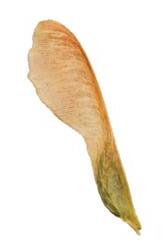



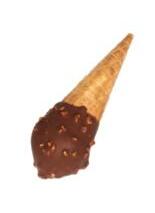

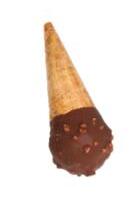




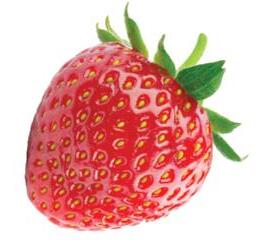
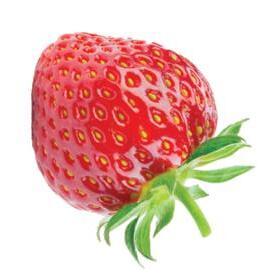

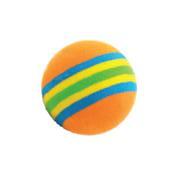



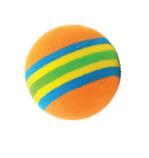
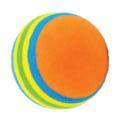
EUREKA MATH2 PK ▸ M1 ▸ TB © Great Minds PBC 13 Module 1 ▸ Topic B ▸ FAMILY MATH H o w M an ?y MY COUNTING STORY ➁ FOLD ➀ FOLD


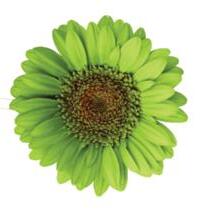


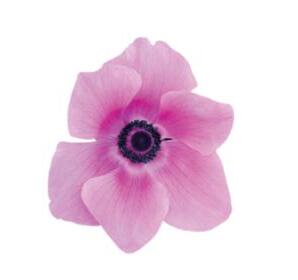
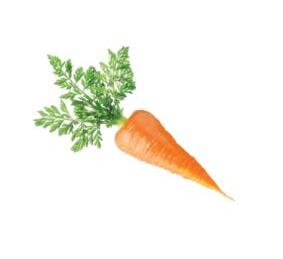

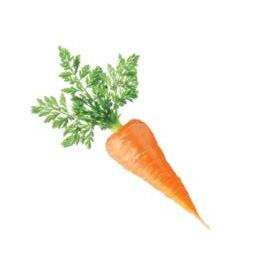

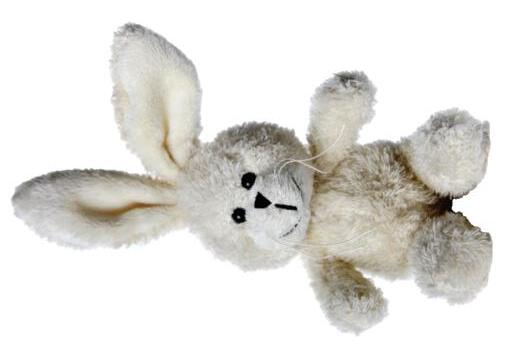
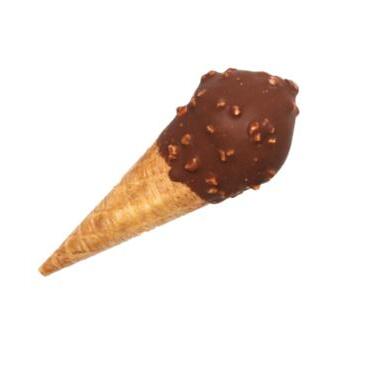

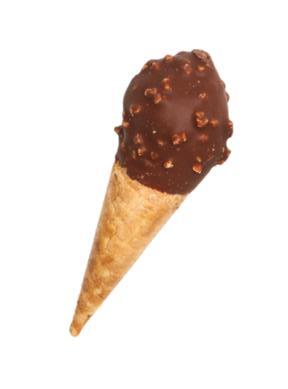

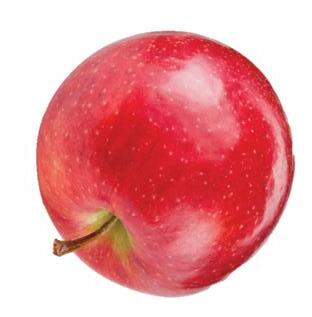

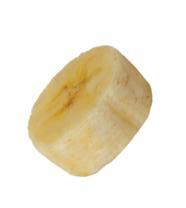
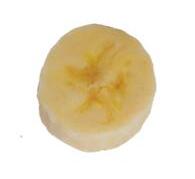

EUREKA MATH2 PK ▸ M1 ▸ TB © Great Minds PBC 15 Module 1 ▸ Topic B ▸ FAMILY MATH
➀
➁ FOLD
FOLD
EUREKA MATH2 PK ▸ M1 ▸ TB ▸ Lesson 7 ▸ Farm Scene © Great Minds PBC 17
FAMILY MATH
Match Written Numbers with Sets of Up to 5 Objects
Dear Family,
Students learn to recognize and name numbers 0 through 5. They match each number to a group of objects. For example, a student might match 4 blocks with the written number 4. Students learn that zero means none, and they match the written number 0 with no objects.

Word We Are Learning
number
At-Home Activities
Number Hunt
Consider reading the book We’re Going on a Bear Hunt by Michael Rosen with your child to introduce the number hunt. You might point out numbers, such as 2 on a clock, or groups of 2 items, such as 2 shoes. Try hunting for numbers 0 through 5. The goal is for children to see that numbers are all around them.
Play Store
Let’s go on a number hunt! Where do you see the number 2?
Set up a pretend store by using the number cards (included in this letter) as price tags for household items. For now, keep the prices between 1 and 5 pennies. Invite your child to count out pennies as they “buy” items from the store. Consider changing roles and asking your child to count to make sure you gave them the correct amount.
© Great Minds PBC 19 Module 1 Topic C
Both cards show the same number.
2
Counting the Math Way

Using fingers for math is not babyish. In fact, students who represent numbers or problems on their fingers do better with counting, comparing numbers, and estimating in later years. Early work with fingers builds a part of the brain that is used for arithmetic. Students learn to “see” a representation of their fingers in their brain even when they don’t use their fingers to solve problems.
Students are learning to count from 1 to 5 in what Eureka Math2 calls the math way. They start with their left pinkie finger, lifting one finger at a time until they reach the thumb.






In counting the math way, students can see and feel the number of fingers increase as they count from 1 to 10, moving from the left pinkie to the right pinkie without interruption. This left-to-right movement will be familiar when students begin to use the same movement with tools such as the number path, and in later grades, the number line. Think of this work as push-ups for the brain!








Literature Connection
Consider reading the following books about numbers. Reading can help your child make connections and spark conversation about their learning. These books may be available at your local library or online.
 by Betsy Franco by Eric Carle by Maurice by Lloyd Moss Sendak
by Betsy Franco by Eric Carle by Maurice by Lloyd Moss Sendak
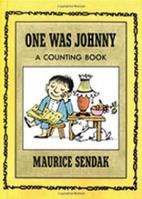

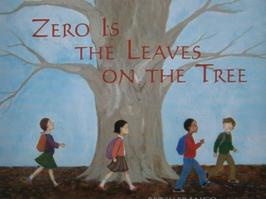
20 PK ▸ M1 ▸ TC EUREKA MATH2 FAMILY MATH ▸ Module 1 ▸ Topic C © Great Minds PBC
1 2 3 4 5 6 7 8 9 10
EUREKA MATH2 PK ▸ M1 ▸ TC ▸ Number Cards © Great Minds PBC 21 Module 1 ▸ Topic C ▸ FAMILY MATH 1 2 3 4 5 6
10 0
7 8 9
© Great Minds PBC 22 FAMILY MATH ▸ Module 1 ▸ Topic C PK ▸ M1 ▸ TC ▸ Number Cards EUREKA MATH2
FAMILY MATH
Count Out a Set of Up to 5 Objects
Dear Family,
Students learn to count out up to 5 objects from a larger group. For example, students might need to take out and count 3 eggs when reading a recipe. Students learn to stop counting or adding objects when the target number 3 is reached. Then they match the 3 eggs with the written number 3.
Board games provide opportunities for students to practice counting and to stop the count at a target number.

At-Home Activities
Cooking Together
Invite your child to look at numbers on a recipe and help you count out ingredients to match.
• The recipe says we need 3 eggs. Can you get out 3 eggs?
• We need 4 scoops of oatmeal in the bowl. Let’s count as we pour them in.
Tap and Stop
Think of a number to tap into your child’s palm, such as 4. Ask your child to count the taps and tell you how many, then switch roles. For an additional challenge, ask your child to close their eyes as they count the number of taps.

How many taps?
Can we do it again, so I can listen to you count?
© Great Minds PBC 23 Module 1 Topic D
Next Steps in Counting
Once students know that numbers show how many, they can begin to look at a written number and count out a group to match. This is more challenging than counting to answer a how many question such as, How many bags are in the yellow hoop? To count out a certain number of items, students must remember the target number, say the number words in order, and accurately count at the same time.
It takes time and practice for students to master counting. Consider using the many opportunities to count with your child that occur throughout the day, such as counting plates on the table or cars passing by. This helps to see counting as more than words to memorize. It is common for young students to make mistakes as they learn to count. Encourage your child to count slowly and carefully. If they need more help, count the objects together or invite them to repeat the count after you.

Literature Connection
Consider reading the following books about numbers and counting. Reading can help your child make connections and spark conversation about their learning. These books may be available at your local library or online.
 by Ellen Stoll Walsh
by Lois Ehlert by Tana Hoban
by Ellen Stoll Walsh
by Lois Ehlert by Tana Hoban
Also consider having your child create their own number book. Your child may wish to draw a few objects, or they may enjoy counting out beads, cereal, or dried pasta to match the number on each page.
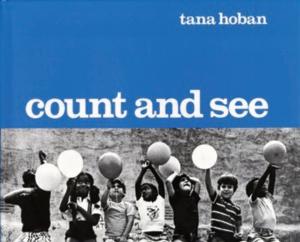
24 PK ▸ M1 ▸ TD EUREKA MATH2 © Great Minds PBC
0 1 2 3 4 5
FAMILY MATH ▸ Module 1 ▸ Topic D
2 3 4 5
© Great Minds PBC 25 EUREKA MATH2 PK ▸ M1 ▸ TD ▸ Lesson 16 ▸ Number Recipe
0
Number Recipe
1
© Great Minds PBC 27 EUREKA MATH2 PK ▸ M1 ▸ TD ▸ Lesson 19 ▸ Shipwreck Scene
FAMILY MATH
Sort to Decompose
Dear Family,
Students now sort the same objects in more than one way, such as by color, shape, or size. As students sort, they see how the number of objects can be broken apart naturally in different ways.
Words We Are Learning
number sentence
At-Home Activities
Sorting Different Ways
Give your child a group of objects, such as toys or markers, that can be sorted into different groups. Let your child decide how to sort them. Ask questions such as the following:
• How many are there?
• How many groups did you make?
Wow! You sorted by color. How many are in the green group?
For an additional challenge, you sort the items and ask your child, “How am I sorting?”

Guess My Rule
Gather a set of coins and ask your child to watch as you sort them. Sort the pennies into one pile and the silver coins into another pile. Invite your child to guess your rule, or how you sorted them. Ask questions such as the following:
• What’s my rule?
• What do you notice about each group?
Sort the coins in a different way and invite your child to guess the rule again.
© Great Minds PBC 29 Module 1 Topic E
There are 5 fish in the group: 3 orange fish and 2 green fish. 5 is 3 and 2.
There are 5 fish in the group: 4 big fish and 1 small fish. 5 is 4 and 1.
Sorting in Different Ways
Sorting is a way to see how numbers can be broken into parts. For example, the 5 flowers shown can be sorted as 3 white flowers and 2 purple flowers or 2 big flowers and 3 little flowers. Either way, the total is still 5 flowers.
Literature Connection
Consider reading the following books about sorting. Reading can help your child make connections and spark conversations about their learning. These books may be available at your local library or online.
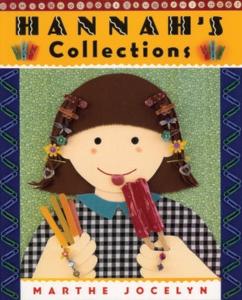
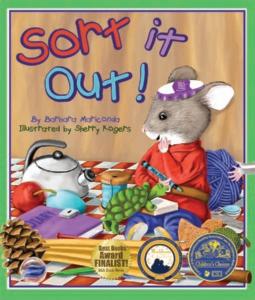
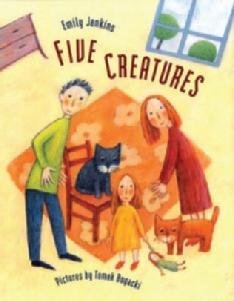 by Barbara Mariconda by Marthe Jocelyn
by Emily Jenkins
by Barbara Mariconda by Marthe Jocelyn
by Emily Jenkins
30 PK ▸ M1 ▸ TE EUREKA MATH2 © Great Minds PBC FAMILY MATH ▸ Module 1 ▸ Topic E
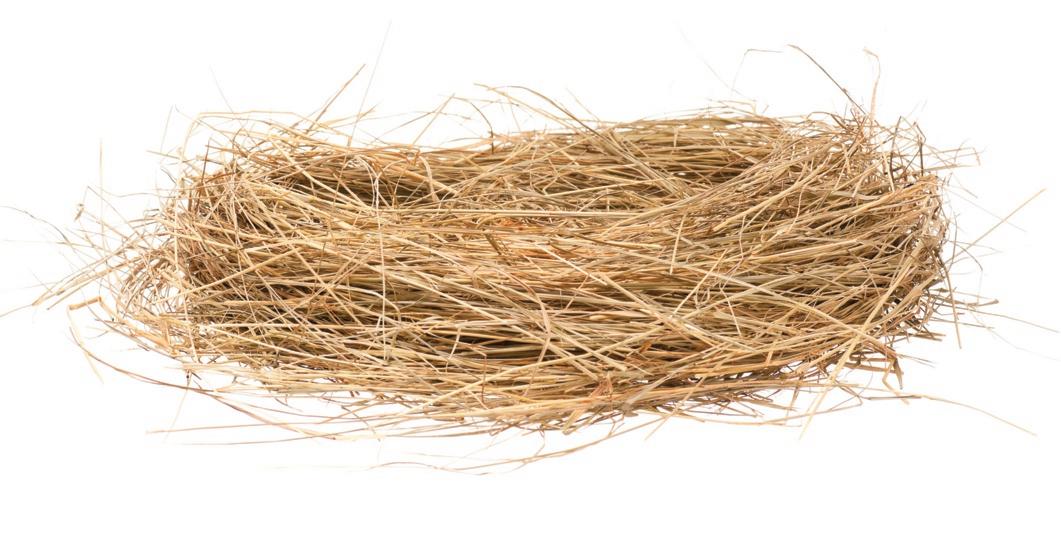
© Great Minds PBC 31 EUREKA MATH2 PK ▸ M1 ▸ TE ▸ Lesson 24 ▸ Mystery Eggs
FAMILY MATH
Match Written Numbers with Sets of Up to 10 Objects





Dear Family,
Students learn to count 6 to 10 objects. Students use a new counting strategy (mark and count) to count each object exactly once when objects are shown in arrangements that make counting more difficult, such as in a circle. Watch as students look for a group of 5 (called a 5-group) in sets of 6 to 10 objects.
Students match each number to a group of objects. Organizing pictures into 5-groups helps students count.
At-Home Activities
Mini-book
Look at How Many? with your child (provided with this letter). As you look at the book together, ask your child questions such as the following:

• How many?
• What groups do you see?
I Spy
Point out and name numbers you see during everyday experiences.

• While riding in an elevator, say, “I spy the number 4. Which button has the number 4?”
MY

How Many?
Your turn!
What numbers do you see?
• At the grocery store, say, “I spy the number 9. Can you find the number 9?”
For an additional challenge, ask, “What does the number tell us about?”

© Great Minds PBC 33 Module 1 Topic F
COUNTING STORY
Strategies for Counting
Since school began, students have been learning strategies (touch and count, move and count, and mark and count) to help them count accurately. They also use the strategies to determine whether they have enough items when passing out classroom materials.

Now students say the number word while crossing off each object. This strategy helps them remember pictures they have counted, especially when pictures are scattered or clumped, like the flowers.
Literature Connection
Consider reading the following books about numbers. Reading can help your child make connections and spark conversations about their learning. These books may be available at your local library or online.

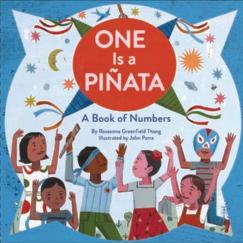 “1, 2, 3, 4, 5"
by Pamela Duncan by Roseanne Greenfield by Cathryn Falwell by Maurice Edwards Thong Sendak
“1, 2, 3, 4, 5"
by Pamela Duncan by Roseanne Greenfield by Cathryn Falwell by Maurice Edwards Thong Sendak


34 PK ▸ M1 ▸ TF EUREKA MATH2 © Great Minds PBC FAMILY MATH ▸ Module 1 ▸ Topic F

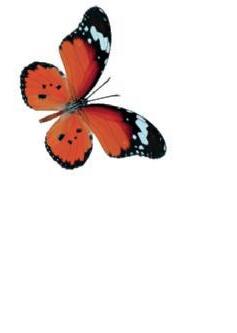
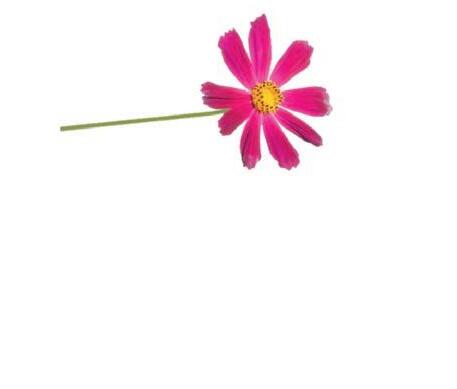


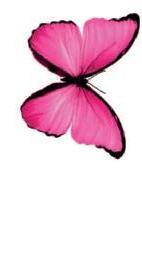













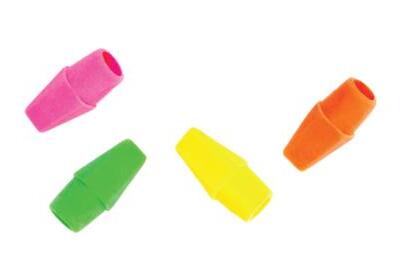
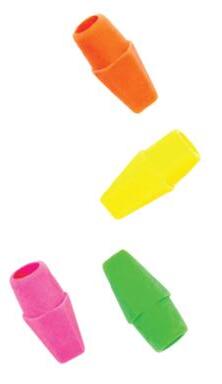





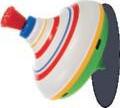
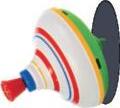




EUREKA MATH2 PK ▸ M1 ▸ TF © Great Minds PBC 35 Module 1 ▸ Topic F ▸ FAMILY MATH H o w M an ?y MY COUNTING STORY ➁ FOLD ➀ FOLD

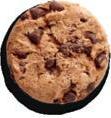
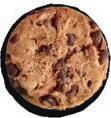


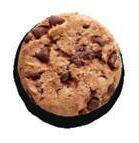
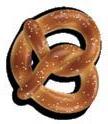

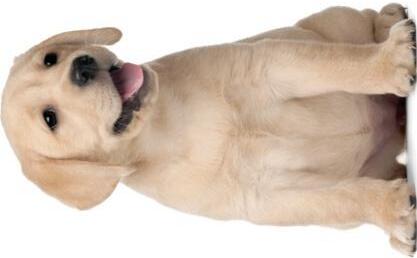






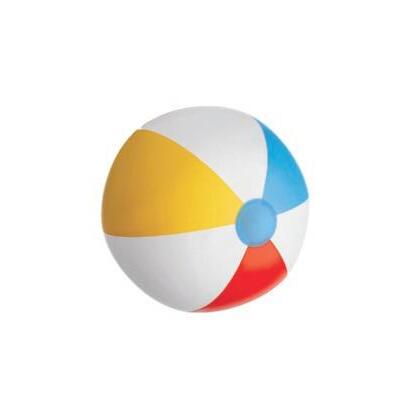

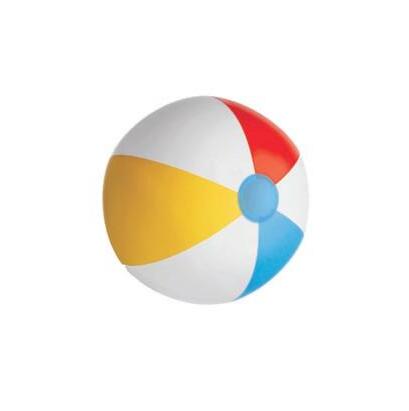





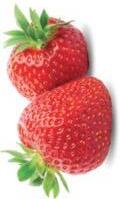
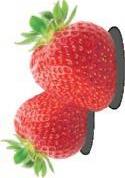

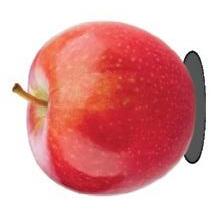

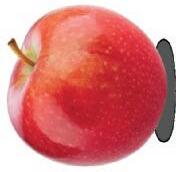
EUREKA MATH2 PK ▸ M1 ▸ TF © Great Minds PBC 37 Module 1 ▸ Topic F ▸ FAMILY MATH
➀
➁ FOLD
FOLD
Count Out a Set of Up to 10 Objects
Dear Family,
As students’ confidence increases, they begin to count out up to 10 objects from a larger group. In this set of lessons, students apply what they have learned. They sort objects into groups, find how many objects are in each group, and show how many with a written number.
At-Home Activities
Counting with Movement
Show a number card from 1 to 10. (The number cards are included with this letter.) Invite your child to hop, clap, or touch their toes that number of times. You can do it too! When this becomes easy, increase the numbers to 12, 15, and then 20.

Search Light
Your turn! What movement should we do? How many times?
Show a number card from 1 to 10 or have your child pick a card. Invite your child to find that number of a certain item, such as pillows, shoes, doorknobs, etc.
Use a flashlight or paper tube as a pointer during the search. Invite your child to count aloud until you reach the target number.

© Great Minds PBC 39 Module 1 Topic G FAMILY MATH
Students count out 7 items to match the written number.
5-Group Formation
When a number is shown as 5 and some more, it is called a 5-group. Groups of 5 help students visualize numbers 6 through 10 (6 is 5 and 1, 7 is 5 and 2, etc.). The dots on the number cards make it easy to see each number as 5 dots plus some more dots. 10 9 8 7 6
Dots are not the only way to show 5-groups. Using fingers to count the math way emphasizes the relationship between 5 and the numbers 6 through 10 (5 fingers on one hand and some fingers on the other hand). The organization of objects and drawings in groups of 5 can also help students see this important relationship.
Literature Connection
Consider reading the following books about numbers. Reading can help your child make connections and spark conversations about their learning. These books may be available at your local library or online.
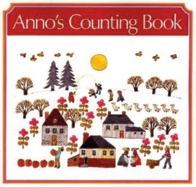
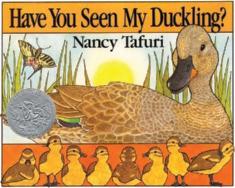 by Nancy Tafuri by Marisabina Russo by Mitsumasa Anno
by Nancy Tafuri by Marisabina Russo by Mitsumasa Anno
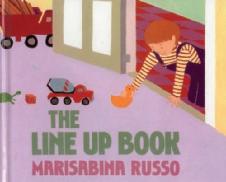
40 PK ▸ M1 ▸ TG EUREKA MATH2 FAMILY MATH ▸ Module 1 ▸ Topic G © Great Minds PBC
EUREKA MATH2 PK ▸ M1 ▸ TG ▸ Number Cards © Great Minds PBC 41 Module 1 ▸ Topic G ▸ FAMILY MATH 1 2 3 4 5 6
10 0
7 8 9
42 PK ▸ M1 ▸ TG ▸ Number Cards EUREKA MATH2 FAMILY MATH ▸ Module 1 ▸ Topic G © Great Minds PBC
EUREKA MATH2 PK ▸ M1 ▸ TG ▸ Lesson 33 ▸ Prehistoric Scene © Great Minds PBC 43
A Story of Units® How Many? ▸ PK LEARN Module 1 Module 2 Module 3 Module 4 Module 5 Module 6 Sorting and Counting Shapes Parts and Patterns Ways to Compare Math Stories Math in Play
FAMILY MATH
Spatial Relations
Dear Family,
Students learn position words to describe the relationships among objects. Through playful experiences, such as finding “treasure” and making maps, students develop the spatial skills that are used by mathematicians, artists, scientists, engineers, and architects.
Maps, or models, show the location of objects and help us move from one place to the next. As students create maps of familiar places, they practice using position words and explore different perspectives.

At-Home Activities
Create a Map
Work together to create a map of your house, room, or neighborhood by using blocks, small toys, or drawings. For an additional challenge, hide an item and mark its location on the map. Invite your child to use the map to find the hidden item.
Roll Call for Toys

Invite your child to line up some toys or small objects. Ask questions such as the following to help your child practice using position words:
• Can you put the green car behind the big truck?
• Which toy is between the blue car and the green car?
Without pointing, can you tell me where I should draw the windows on our map?
• Without pointing, can you tell me where the big truck is? Is it next to the green car?
© Great Minds PBC 47 Module 2 Topic A
Position Words
Geometry is not only the study of shapes but also the study of how objects and people relate to one another in space. Students use position words and phrases, such as beside, between, next to, in front of, and behind, to describe an object’s or a person’s location. Now instead of saying that something is “over there,” students have the words to tell people where things are in their world.
The frogs are next to the pond.
Literature Connection
The duck is behind the rocking chair.
Consider reading the following books about position words. Reading can help your child make connections and spark conversations about their learning. These books may be available at your local library or online.
 by Pat Hutchins by Stan and by Joan Sweeney Jan Berenstain
by Pat Hutchins by Stan and by Joan Sweeney Jan Berenstain

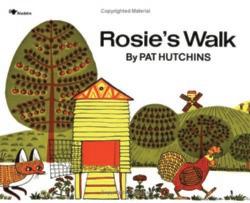
PK ▸ M2 ▸ TA EUREKA MATH2 © Great Minds PBC 48 FAMILY MATH ▸ Module 2 ▸ Topic A
Analyze and Name Two-Dimensional Shapes
Dear Family,
Students learn to describe and name two-dimensional shapes: triangles, circles, rectangles, and square rectangles. Students may notice that a shape is a triangle, for example, because it has 3 straight sides and 3 corners. They know that a shape is a circle because it is perfectly round, like a wheel. Be sure to ask your child about square rectangles!
Words We Are Learning
circle rectangle
square rectangle triangle
At-Home Activities
Mini-book
Look at Where is the ___? with your child (provided with this letter). As you look at the book together, ask your child questions such as the following:

• How many triangles can you find? How many square rectangles?
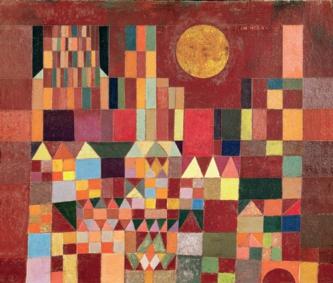
• What other shapes do you see?
Shape Hunt
Cut out the shape cards. Ask your child to close their eyes, and hide one of the shape cards near or on a toy. Give your child position clues about where the shape is. Encourage your child to use the clues to find the shape. Then ask your child to choose a shape card, hide it while you close your eyes, and give you clues to find it.
Students discover that shapes are everywhere!
Pick a shape. Does it have straight sides, corners, or curves? How many?
Where is the ?
Are you ready for a hint? The triangle is between the teddy bears.
© Great Minds PBC 49 Module 2 Topic B
FAMILY MATH
Painting by Paul Klee (1879–1940), Castle and Sun, 1928
SHAPES STORY
MY
Two-Dimensional Shapes
In prekindergarten, students learn about the features listed below each shape. These shapes are typical examples students see in books and media. Students are also exposed to variants (see the shape cards included in this letter), which are other examples that are less frequently encountered. For example, students see that a triangle is still a triangle even if it is “skinny” or “turned upside down.” Students also learn that a square rectangle is a special type of rectangle. It can be called a square rectangle, or square, for short. As students’ understanding of geometry grows in elementary school, they will learn about more advanced features of these shapes as well as about other polygons.
No straight sides 3 straight sides
Special type of No corners
4 straight sides
4 corners rectangle (square Perfectly round, rectangle) with like a wheel 4 straight sides that are all the same
Literature Connection
3 corners
Consider reading the following books about shapes. Reading can help your child make connections and spark conversations about their learning. These books may be available at your local library or online.

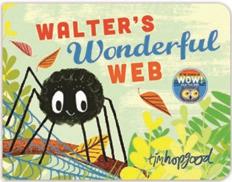

Friendshape
by Alan Baker by Tim Hopgood by Amy Krouse Rosenthal
PK ▸ M2 ▸ TB EUREKA MATH2 © Great Minds PBC 50 FAMILY MATH ▸ Module 2 ▸ Topic B
H e e ’s toa great c rcleoffri e n d s ! AMY KROUSE ROSENTHAL AND TOM LICHTENHELD An uplifting celebration of friendship
ROSENTHAL LICHTENHELD SCHOLASTIC PRESS Friendshape
EUREKA MATH2 PK ▸ M2 ▸ TB © Great Minds PBC 51 Module 2 ▸ Topic B ▸ FAMILY MATH
EUREKA MATH2 PK ▸ M2 ▸ TB © Great Minds PBC 53 Module 2 ▸ Topic B ▸ FAMILY MATH

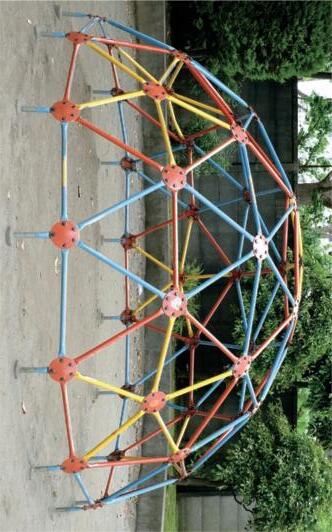
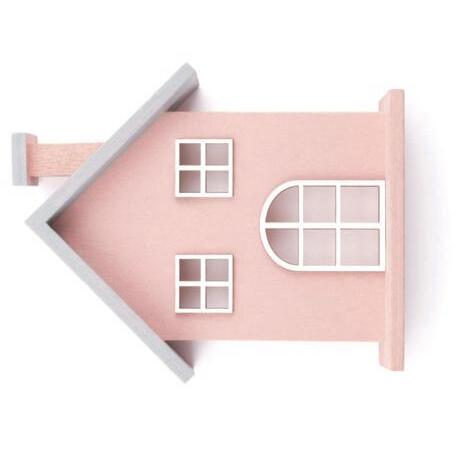
EUREKA MATH2 PK ▸ M2 ▸ TB © Great Minds PBC 55 Module 2 ▸ Topic B ▸ FAMILY MATH W h e r e i s t h e ? MY SHAPES STORY ➁ FOLD ➀ FOLD

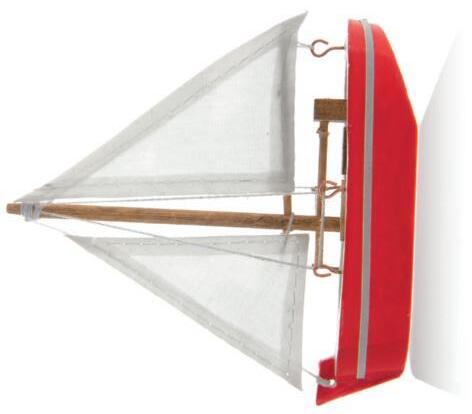

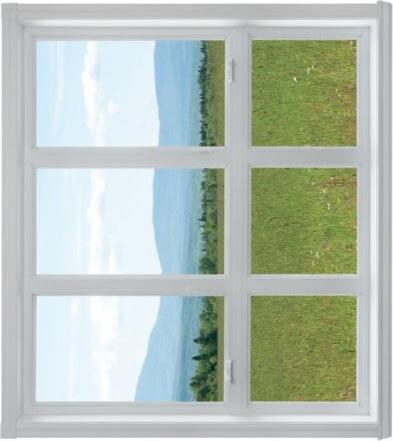
EUREKA MATH2 PK ▸ M2 ▸ TB © Great Minds PBC 57 Module 2 ▸ Topic B ▸ FAMILY MATH
➀
➁ FOLD
FOLD
FAMILY MATH
Build and Compose Two-Dimensional Shapes
Dear Family,
Students have named two-dimensional shapes (circles, triangles, rectangles, and square rectangles). Now they use materials to build individual shapes and combine multiple shapes to create pictures. Students are encouraged to pay close attention to the number of straight sides, corners, or curves to make, or to compose, a picture or shape puzzle.
Word We Are Learning
build
At-Home Activities
Shape Builder
Students build models of shapes with 3 straight sides by using clay and straws.
Invite your child to use household materials to build their own shapes. Toothpicks make good straight sides for this activity. Children can use string or cooked spaghetti to explore shapes with curves. Consider asking, “What is the name of that shape? How do you know?”
For an extra challenge, give your child clues about a specific shape and have them build it. For example, say, “The shape I’m thinking of has 4 sides and 4 corners. Can you build it?”

Shape Hop
Cut out shapes on paper of different colors and tape them onto the floor or draw the shapes outside with sidewalk chalk. Call out a shape and have your child hop to the shape you named.
First, stand on the triangle. Next, hop to the square rectangle!

© Great Minds PBC 59 Module 2 Topic C
Composing Shapes

Students begin to see combinations of shapes in their world. They learn that shapes can be put together to make, or compose, new shapes. It is common for students to name new shapes based on the object they represent. For example, a square rectangle and a triangle make a house. You can support your child by asking, “What shapes did you use to make your picture?
How many shapes did you use?”
The house is a square rectangle with a Students explore by using different triangle for the roof. shapes to make the picture.
Literature Connection
Consider reading the following books about shapes. Reading can help your child make connections and spark conversations about their learning. These books may be available at your local library or online.
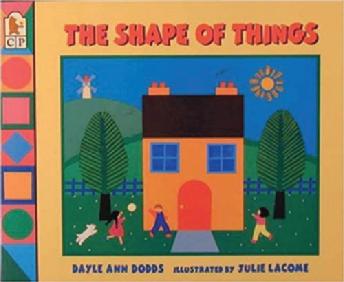

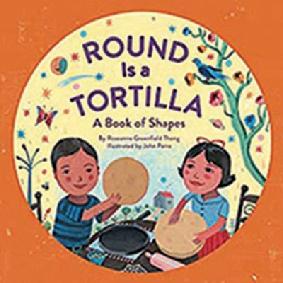
 by Roseanne Greenfield by Ellen Stoll Walsh by Dayle Ann Dodds Thong
by Roseanne Greenfield by Ellen Stoll Walsh by Dayle Ann Dodds Thong
PK ▸ M2 ▸ TC EUREKA MATH2 © Great Minds PBC 60 FAMILY MATH ▸ Module 2 ▸ Topic C
FAMILY MATH
Analyze Three-Dimensional Shapes

Dear Family,
Students learn to describe three-dimensional shapes. However, at this level, students are not expected to formally name these shapes. Instead, students may refer to a sphere as a “ball” or to a cylinder as a “can.” Students experiment with stacking, rolling, sliding, and stamping three-dimensional shapes to learn more about their features.

At-Home Activities
Mini-book
Look at What Is This? with your child (provided with this letter). As you look at the book together, ask your child questions such as the following:

• What shapes do you see?
• How many shapes?
Shape Play
Invite your child to stack blocks and other threedimensional shapes, such as tissue boxes, soup cans, cardboard boxes, and party hats. As your child builds, consider asking the following questions:
• What would happen if you put that shape on top?
• Why is this block hard to stack?

What Is This?
What shapes did you use?

© Great Minds PBC 61 Module 2 Topic D
A cube has flat parts, The squares touch to make
A cube has 8 corners. or faces, that are edges and corners. square rectangles.
MY SHAPES STORY
Solid Shapes

Students explore the following shapes.
CYLINDER CONE SPHERE


2 round or circle faces
1 round or circle face
No corners 1 tip (can be called a corner)
Curved around the middle Rolls like a wheel
No corners or tips
Rolls like a ball
PYRAMID RECTANGULAR PRISM CUBE



1 square face
6 faces that are all rectangles*
6 square faces
4 corners 8 corners 8 corners
4 triangle faces Looks like a brick
1 tip (can be called a corner)
Literature Connection
*In this example, two of the rectangles are square rectangles.
Looks like a box
Consider reading the following books about shapes. Reading can help your child make connections and spark conversations about their learning. These books may be available at your local library or online.


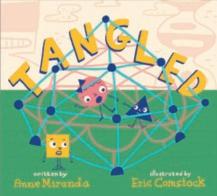
PK ▸ M2 ▸ TD EUREKA MATH2 © Great Minds PBC 62 FAMILY MATH ▸ Module 2 ▸ Topic D
by Anne Miranda by Kim Smith by Stuart J. Murphy




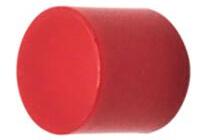




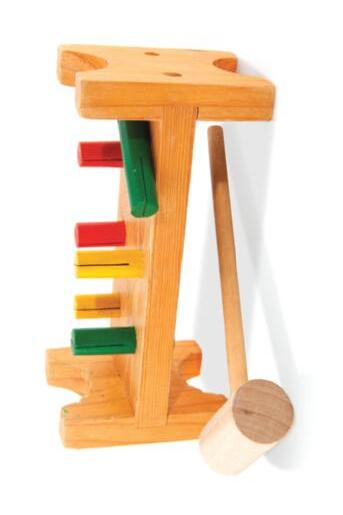
© Great Minds PBC 63 Module 2 ▸ Topic D ▸ FAMILY MATH EUREKA MATH2 PK ▸ M2 ▸ TD W
MY SHAPES STORY ➁ FOLD ➀ FOLD
h at Is This ?








EUREKA MATH2 PK ▸ M2 ▸ TD © Great Minds PBC 65 Module 2 ▸ Topic D ▸ FAMILY MATH
➀
➁ FOLD
FOLD
EUREKA MATH2 PK ▸ M2 ▸ TD ▸ Lesson 14 ▸ Puppet’s Picture © Great Minds PBC 67
A Story of Units® How Many? ▸ PK LEARN Module 1 Module 2 Module 3 Module 4 Module 5 Module 6 Sorting and Counting Shapes Parts and Patterns Ways to Compare Math Stories Math in Play
FAMILY MATH
Compose and Decompose Shapes and Numbers
Dear Family,
Students learn to put together shapes and numbers. They use small shapes to create a larger shape. Then they count how many shapes, or parts, are used to make the whole shape. Dot cards and pictures are used to find the smaller numbers, or parts, that make up a larger number.
We can use many different shapes, or parts, to make the whole bunny.

At-Home Activities
Puzzle Time!
There are 4 dots. I see 2 on one side and 2 on the other.
Invite your child to put together a puzzle with you. Puzzles are a fun way to see how smaller parts can be put together to make a larger shape. They give students hands-on experience with part–whole relationships.
Shake Those Coins
Gather 3 pennies and place them in a cup. Ask your child to shake and spill the coins. Count the coins that are heads up and those that are tails up. Once your child has practiced with 3 coins, repeat with 4 and 5 coins.
How many coins are there?
How many are heads up?
How many are tails up?

© Great Minds PBC 71 Module 3 Topic A
Number Writing
The writing rectangle guides students in writing numbers correctly. There is a dot at the top of each writing rectangle to give students a place to start. Students are less likely to reverse their numbers when they start from the dot and keep their writing inside the rectangle. Eventually students will be able to write numbers without the writing rectangle, but this tool gives them the structure to form numbers correctly from the start.
Simple rhymes help students remember how to write each number. Some students will say the rhyme each time they write until the strokes become automatic.
Number Rhymes
1 “Top to bottom, and then I am done. I just wrote the number 1.”
2 “Half a moon, there’s more to do. Slide to the right. I wrote a 2.”
3 “To the right and around the tree. Around again to make a 3.”
4 “A little line down, to the right some more. Now a big line down to make a 4.”
5 “Down the side, around a hive. Give it a hat. I wrote a 5.”
Literature Connection
Consider reading the following books about shapes and numbers. Reading can help your child make connections and spark conversations about their learning. These books may be available at your local library or online.
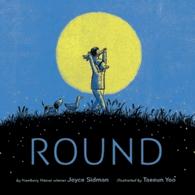 by Donald Crews by Hervé Tullet by Joyce Sidman
by Donald Crews by Hervé Tullet by Joyce Sidman


PK ▸ M3 ▸ TA EUREKA MATH2 © Great Minds PBC 72 FAMILY MATH ▸ Module 3 ▸ Topic A
Use pattern blocks to fill in the hexagons in different ways.
EUREKA MATH2 PK ▸ M3 ▸ TA ▸ Lesson 1 ▸ Hexagons © Great Minds PBC 73
Fill in the bunny puzzles in two different ways. How many parts are in each puzzle?
EUREKA MATH2 PK ▸ M3 ▸ TA ▸ Lesson 2 ▸ Bunny Puzzles © Great Minds PBC 75
Name
Write the numbers.
EUREKA MATH2 PK ▸ M3 ▸ TA ▸ Lesson 2 © Great Minds PBC 77 2
Fill in the puzzle. Write how many of each shape you used.
PK ▸ M3 ▸ TA ▸ Lesson 2 EUREKA MATH2 © Great Minds PBC 78 PROBLEM SET
Name
Write the number.
Fill in each puzzle with cubes. Write how many cubes you used.
EUREKA MATH2 PK ▸ M3 ▸ TA ▸ Lesson 3 © Great Minds PBC 79 3
Fill in each puzzle with cubes. Write how many cubes you used.
PK ▸ M3 ▸ TA ▸ Lesson 3 EUREKA MATH2 © Great Minds PBC 80 PROBLEM SET
Name
Write the number.
Fill in each puzzle with cubes. Write how many cubes you used.
EUREKA MATH2 PK ▸ M3 ▸ TA ▸ Lesson 4 © Great Minds PBC 81 4
Fill in each puzzle with cubes. Write how many cubes you used.
PK ▸ M3 ▸ TA ▸ Lesson 4 EUREKA MATH2 © Great Minds PBC 82 PROBLEM SET
Name
Write the number.
Fill in each puzzle with cubes. Write how many cubes you used.
EUREKA MATH2 PK ▸ M3 ▸ TA ▸ Lesson 5 © Great Minds PBC 83 5
Fill in each puzzle with cubes. Write how many cubes you used.
PK ▸ M3 ▸ TA ▸ Lesson 5 EUREKA MATH2 © Great Minds PBC 84 PROBLEM SET
FAMILY MATH
Use Structure to Explore Numbers 6–10

Dear Family,
Students learn that a number can be decomposed, or broken apart, in more than one way. For example, 6 can be decomposed into 1 and 5, 4 and 2, 6 and 0, or 3 and 3. This foundational skill of knowing how numbers can be broken up in different ways will help children beyond prekindergarten.
We can break apart 10 in different ways. Students make rekenreks to explore how a group On this dot card, we might see 10 is 5 and 5. of 5 can be seen in the numbers 6–10. For example, they can see 6 as 5 red beads and 1 white bead.
At-Home Activities
Mini-book
Look at 5 or Not 5? with your child (provided with this letter). As you look at the book together, ask your child questions such as the following:
• Do you see 5 things on this page or a different number of things?







• How many things are there?
You might ask your child to tap or circle either the 5 or Not 5 on each page as they decide how many things there are.
Grocery List
Work on a grocery list together. Have your child write the number of items you need, such as 5 apples, 2 boxes of cereal, or 1 carton of milk. If your child is unsure of what a number looks like, consider writing it and allowing your child to trace it.
5 or Not 5?
I need 5 apples. Can you write the number 5?
© Great Minds PBC 85 Module 3 Topic B
STORY
MY NUMBER
Structure of 6–10
5 is a significant number in the life of a prekindergarten student. When students build a 10-bead rekenrek, they begin to see that 5 is a part of the numbers 6, 7, 8, 9, and 10. For example, 6 is 5 and 1, 7 is 5 and 2, and so on.

Fingers are visual and kinesthetic tools—something students can feel—that support understanding of the numbers 6–10: 6 is 5 fingers on one hand and 1 more finger.
Dot cards continue to be used as students break apart the numbers 6–10 in different ways. When decomposing 8, for example, a student may say, “I see 4 on the top and 4 on the bottom,” or “I just know it’s 5 on top and 3 on the bottom.” This supports the development of the essential understanding that totals are composed of smaller parts.
Literature Connection
Consider reading the following books about numbers and counting. Reading can help your child make connections and spark conversations about their learning. These books may be available at your local library or online.


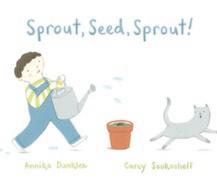
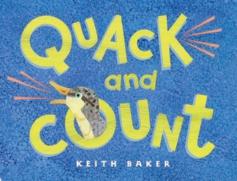 by Stuart J. Murphy by Sergio Ruzzier by Keith Baker by Annika Dunklee and Carey Sookocheff
by Stuart J. Murphy by Sergio Ruzzier by Keith Baker by Annika Dunklee and Carey Sookocheff
PK ▸ M3 ▸ TB EUREKA MATH2 © Great Minds PBC 86 FAMILY MATH ▸ Module 3 ▸ Topic B
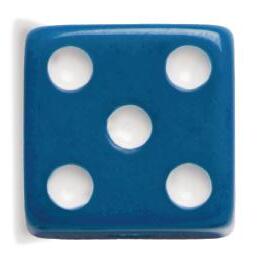







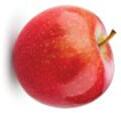


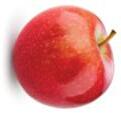

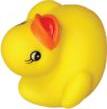






EUREKA MATH2 PK ▸ M3 ▸ TB © Great Minds PBC 87 Module 3 ▸ Topic B ▸ FAMILY MATH 5 Not 5 5 Not 5 5 or Not 5? MY NUMBER STORY 5 Not 5 5 Not 5 5 Not 5 5 Not 5 ➁ FOLD ➀ FOLD
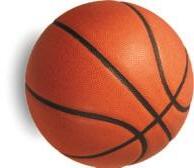



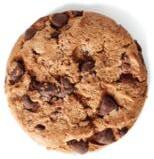
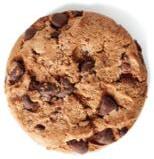

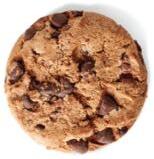



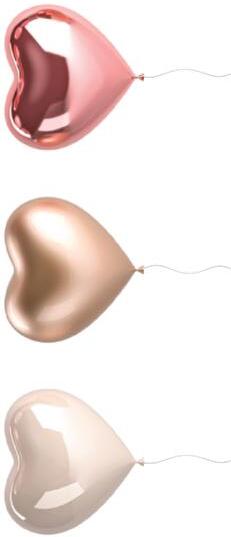
EUREKA MATH2 PK ▸ M3 ▸ TB © Great Minds PBC 89 Module 3 ▸ Topic B ▸ FAMILY MATH 5 Not 5 5 Not 5 5 Not 5 5 Not 5 5 Not 5 5 Not 5 ➁ FOLD ➀ FOLD
Name
Write the number.
Fill in each puzzle with cubes. Write how many cubes you used.
EUREKA MATH2 PK ▸ M3 ▸ TB ▸ Lesson 9 © Great Minds PBC 91 9
Fill in each puzzle with cubes. Write how many cubes you used.
PK ▸ M3 ▸ TB ▸ Lesson 9 EUREKA MATH2 © Great Minds PBC 92 PROBLEM SET
Name
Write the number.
Fill in each puzzle with cubes. Write how many cubes you used.
EUREKA MATH2 PK ▸ M3 ▸ TB ▸ Lesson 9 © Great Minds PBC 93 9
Fill in each puzzle with cubes. Write how many cubes you used.
PK ▸ M3 ▸ TB ▸ Lesson 9 EUREKA MATH2 © Great Minds PBC 94 PROBLEM SET
Name
Write the number.
Fill in each puzzle with cubes. Write how many cubes you used.
EUREKA MATH2 PK ▸ M3 ▸ TB ▸ Lesson 10 © Great Minds PBC 95 10
Fill in each puzzle with cubes. Write how many cubes you used.
PK ▸ M3 ▸ TB ▸ Lesson 10 EUREKA MATH2 © Great Minds PBC 96 PROBLEM SET
Name
Write the number.
Fill in each puzzle with cubes. Write how many cubes you used.
EUREKA MATH2 PK ▸ M3 ▸ TB ▸ Lesson 10 © Great Minds PBC 97 10
Fill in each puzzle with cubes. Write how many cubes you used.
PK ▸ M3 ▸ TB ▸ Lesson 10 EUREKA MATH2 © Great Minds PBC 98 PROBLEM SET
Name
Write the number.
Fill in each puzzle with cubes. Write how many cubes you used.
EUREKA MATH2 PK ▸ M3 ▸ TB ▸ Lesson 11 © Great Minds PBC 99 11
Fill in each puzzle with cubes. Write how many cubes you used.
PK ▸ M3 ▸ TB ▸ Lesson 11 EUREKA MATH2 © Great Minds PBC 100 PROBLEM SET
FAMILY MATH Analyze the Count Sequence
Dear Family,
Students explore the sequence of numbers from 1 to 10. The number stairs make it easy for students to see that the next number in the count sequence is 1 more. For example, students learn to say, “I have 1. 1 more is 2. I have 2. 1 more is 3.”
Students see the pattern of 1 more as

Students build number stairs to they count. For example, “We have 10 to show the pattern of 1 more. 5 cubes. 1 more is 6.”


At-Home Activities
Number Detective
Cut out the number cards at the end of this letter. Mix up the cards and have your child place them in order from 1 to 10.
Once the cards are in order, flip a few cards so some numbers are hidden. Point to a hidden number card and have your child use the other numbers that are showing to figure out the hidden number.
This number is hiding. What number do you think it is?
How do you know?
© Great Minds PBC 101 Module 3 Topic C
10 8 6 4 2
Number Stairs
Invite your child to create their own number stairs. Children can stack blocks, place stickers on paper, or lay out coins, beads, or rocks starting with 1 and building up to 10. Encourage your child to use 1-more counting as in the following example: “I have 1. 1 more is 2. I have 2. 1 more is 3.”
Number Stairs
In class, students will have the opportunity to build number stairs from 1 to 10 and find that the next number in the count sequence is 1 more. Number stairs allow students to visualize, or see, the 1-more pattern in the forward counting sequence. This understanding helps them know how many objects are in a group when they add 1. Without that understanding, a student might add a penny to a group of 24 and count the whole group from 1.
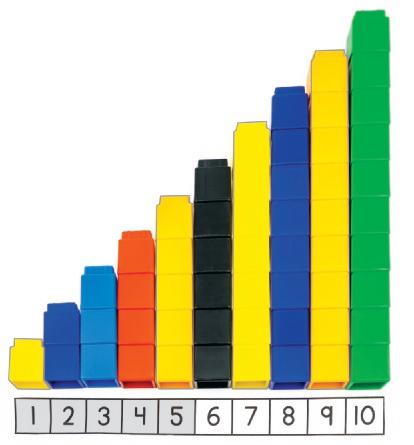
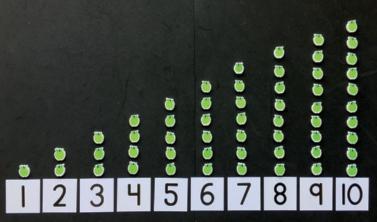
Literature Connection
Consider reading the following books about counting. Reading can help your child make connections and spark conversations about their learning. These books may be available at your local library or online.



PK ▸ M3 ▸ TC EUREKA MATH2 © Great Minds PBC 102 FAMILY MATH ▸ Module 3 ▸ Topic C
by Julie Flett by Juana Medina by Elisha Cooper
EUREKA MATH2 PK ▸ M3 ▸ TC ▸ Number Cards © Great Minds PBC 103 Module 3 ▸ Topic C ▸ FAMILY MATH 1 2 3 4 5 6 7 8 9 10
FAMILY MATH
Use Structure to Analyze Patterns
Dear Family,
Students learn that patterns can help us predict what comes next. When we see something that repeats, we see a pattern. When analyzing patterns, students are likely to perceive them in different ways. While one student may see a traffic light pattern as red-greenyellow, another may see green-yellow-red. These differences provide an important opportunity to share multiple perspectives, or points of view, which is a theme that will carry throughout students’ mathematics learning.
Word We Are Learning pattern
At-Home Activities
Pattern Hunt
Students learn that patterns can be found everywhere. Some patterns, such as traffic lights, occur over time. Students can use pictures to record the pattern.


Invite your child to help you hunt for patterns in your home or around your neighborhood. Children may notice patterns in colors, shapes, or designs. As your child points out a pattern, pause to ask them how they see it. Consider sharing a different way of seeing the pattern while respecting your child’s way of seeing it (e.g., “You saw black-green, and I saw green-black!”).

Match My Pattern
What part keeps repeating in that pattern? What would come next?
Demonstrate a movement pattern, such as clap-stomp-stomp, clap-stomp-stomp. Invite your child to repeat the pattern and to keep it going. They might want to create their own pattern by using movements or sounds.
© Great Minds PBC 105 Module 3 Topic D
Consider playing music and using kitchen tools (pots, pans, silverware, cups) to create an engaging rhythm and sound pattern.
Patterns
Students learn that a pattern is something that can help us predict what will happen next. They also learn about patterns that repeat and that the part of the pattern that repeats is called the pattern unit.
The pattern unit is yellow-red-blue.

Students see that the same pattern structure, for example an AB pattern, can be made in different ways. Red circle–yellow square and stomp-clap are both AB patterns.
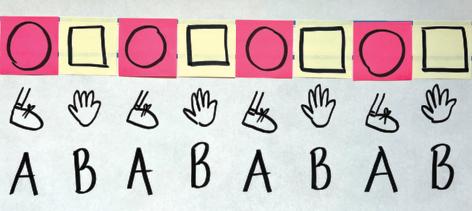
Literature Connection
Consider reading the following books about patterns. Reading can help your child make connections and spark conversations about their learning. These books may be available at your local library or online.
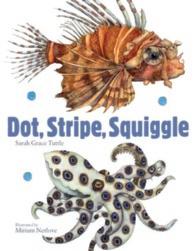

 by Denise Fleming by Sarah Grace Tuttle by Sarah Grace Tuttle
by Denise Fleming by Sarah Grace Tuttle by Sarah Grace Tuttle
PK ▸ M3 ▸ TD EUREKA MATH2 © Great Minds PBC 106 FAMILY MATH ▸ Module 3 ▸ Topic D
A Story of Units® How Many? ▸ PK LEARN Module 1 Module 2 Module 3 Module 4 Module 5 Module 6 Sorting and Counting Shapes Parts and Patterns Ways to Compare Math Stories Math in Play
FAMILY MATH
Describe Size

Dear Family,
Students explore different ways to describe the size of items. Students see the different ways in which things can be big or small as they begin to consider volume (Does it fit?) and capacity (Which container can hold more?).
We can tell which container holds more by pouring the water back and forth among them. Big containers hold more water. Small containers hold less water.
At-Home Activities
Explore Capacity

Bring small cups and other containers to bath time or invite your child to help “wash” dishes in the sink. Consider using the following sentences and questions to guide the exploration:

• This cup is really big. I wonder how much water it can hold.
• Which container do you think is the biggest? Which is the smallest?
Create a Book
Use the book template provided with this letter to invite your child to make their own mini-book about big and small. On each page, have your child draw pictures of big and small items. Consider helping your child gather ideas by noticing big and small objects in your neighborhood or community.
Which cup holds more water? Which cup holds less water?
© Great Minds PBC 109 Module 4 Topic A
MY S I Z E S TO RY
Big and Small
Describing Size
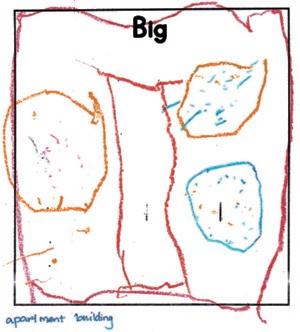
Using language to describe objects develops over time and becomes more precise as students have opportunities to practice. For example, a student may say, “A building is big,” and when asked what makes the building big, they may gesture with their hands and say, “It goes up to the sky.” As students explain what makes an object big, it becomes clear that the focus is often on a measurable attribute, such as height.
Literature Connection
Consider reading the following books about size. Reading can help your child make connections and spark conversations about their learning. These books may be available at your local library or online.
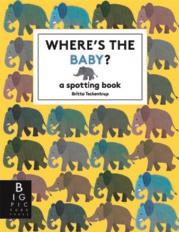

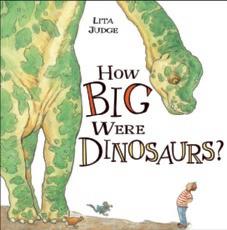
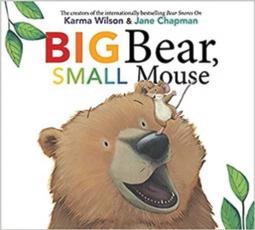 by Karma Wilson by Lita Judge by Jo Ellen Bogart by Britta Teckentrup
by Karma Wilson by Lita Judge by Jo Ellen Bogart by Britta Teckentrup
PK ▸ M4 ▸ TA EUREKA MATH2 © Great Minds PBC 110 FAMILY MATH ▸ Module 4 ▸ Topic A
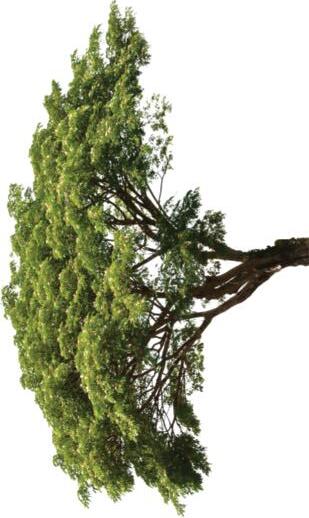

© Great Minds PBC 111 Module 4 ▸ Topic A ▸ FAMILY MATH EUREKA MATH2 PK ▸ M4 ▸ TA M Y S I Z E S T O R Y Bi g and Small ➁ FOLD ➀ FOLD
© Great Minds PBC 113 Module 4 ▸ Topic A ▸ FAMILY MATH EUREKA MATH2 PK ▸ M4 ▸ TA
➀ FOLD
➁ FOLD
Name Draw something that is big.
Big
EUREKA MATH2 PK ▸ M4 ▸ TA ▸ Lesson 1 © Great Minds PBC 115 1
FAMILY MATH
Compare Heights and Lengths
Dear Family,
Students learn vocabulary that allows them to be more precise in their description of objects. They practice using comparison words such as longer than or shorter than, taller than or shorter than, and the same length as or the same height as to compare two objects.

Words We Are Learning
height
length
long(er)
short(er)
tall(er) Long Short Short Tall
Students use gestures to help them remember new math words.




At-Home Activities
I Spy
Have your child look for objects of different lengths or heights and play I Spy together.

• I spy something short. (My baby sister!)
• I spy something tall and green. (A tree!)
• I spy something shorter than my foot. (A worm!)
Mini-books
Look at Longer or Shorter? and Taller or Shorter? with your child (provided with this letter). As you look at the books together, ask your child questions such as the following:
• Is longer or shorter? How do you know?
• Is taller or shorter? How do you know?
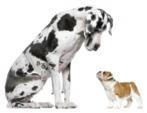
Can you spy something long?
How do you know it’s long?
© Great Minds PBC 117 Module 4 Topic B
MY COM PARI SO N STO RY Longer or Shorter? MY COM PARI SO N S TO RY Taller or Shorter?
Measurement
There are many opportunities in a student’s daily life to notice and explore length and height. The words taller and shorter are used to compare objects that are vertical, or “standing up.” The words longer and shorter are used to compare objects that are horizontal, or “lying down.” Students also compare objects that are “about the same length.”
Most students know by sight whether a worm or a snake is longer. But when it is not obvious that one object is longer or shorter than another object, students see the need to bring the objects close together and line them up at one end to make an accurate comparison.
Literature Connection
Consider reading the following books about comparing sizes of objects. Reading can help your child make connections and spark conversations about their learning. These books may be available at your local library or online.

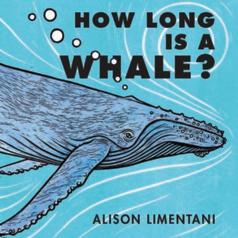

 by Neil Flory by Joe Cepeda by Alison Limentani by Ruth Krauss
by Neil Flory by Joe Cepeda by Alison Limentani by Ruth Krauss
PK ▸ M4 ▸ TB EUREKA MATH2 © Great Minds PBC 118 FAMILY MATH ▸ Module 4 ▸ Topic B
Taller Shorter
Longer
Shorter


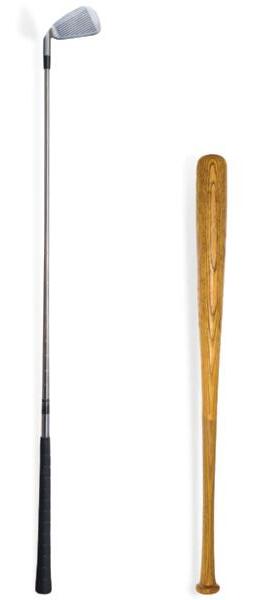
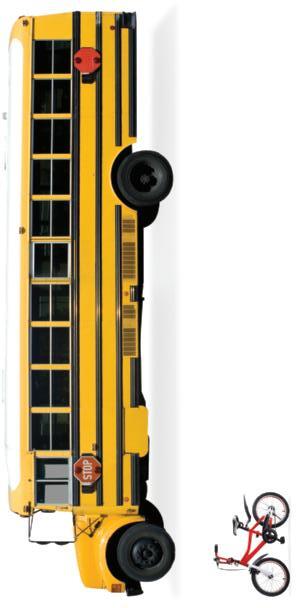
© Great Minds PBC 119 Module 4 ▸ Topic B ▸ FAMILY MATH EUREKA MATH2 PK ▸ M4 ▸ TB M Y C O M P A RI S O N S T O R Y L o n g e r o r S h or t e r ? ➁ FOLD ➀
FOLD
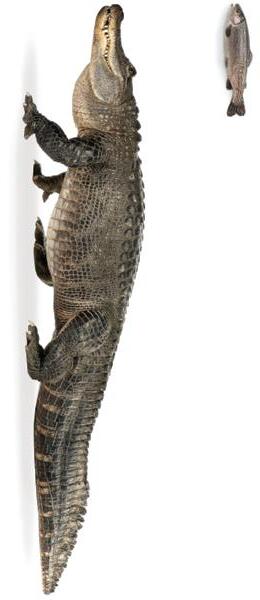
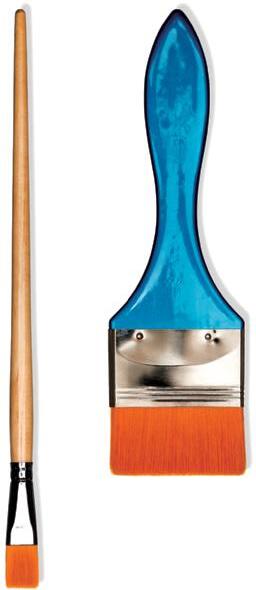
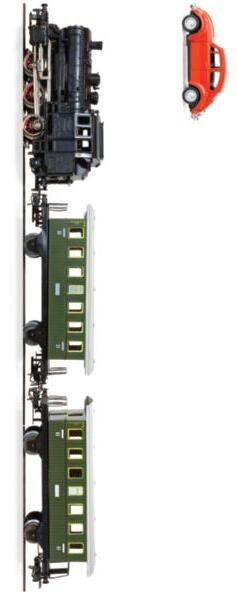


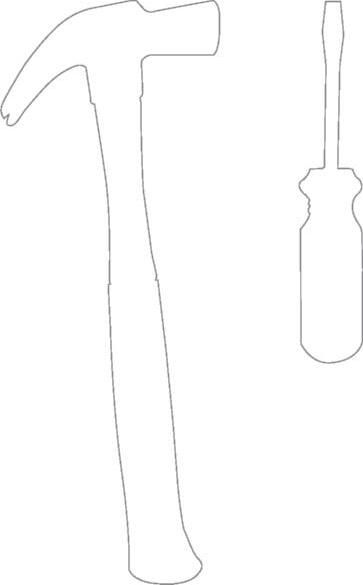
© Great Minds PBC 121 Module 4 ▸ Topic B ▸ FAMILY MATH EUREKA MATH2 PK ▸ M4 ▸ TB
➀
➁ FOLD
FOLD
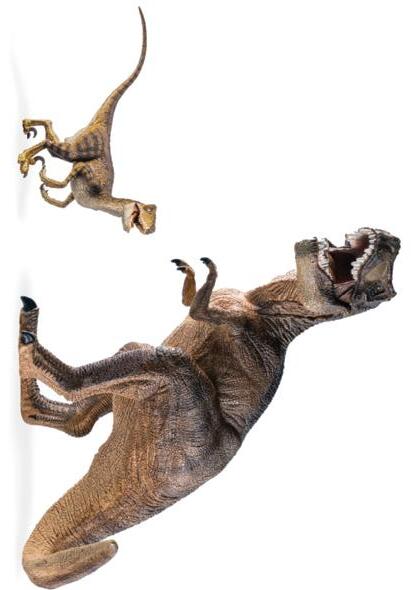
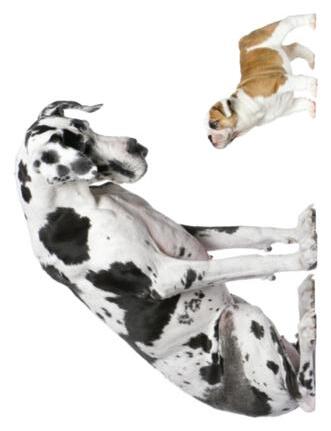
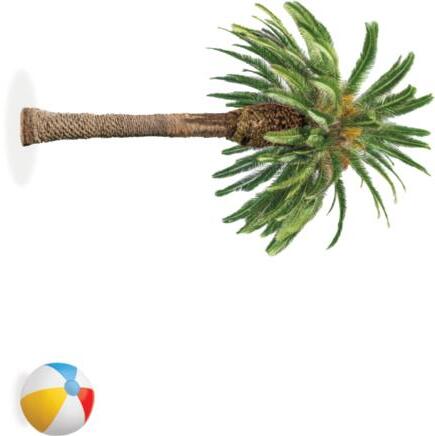
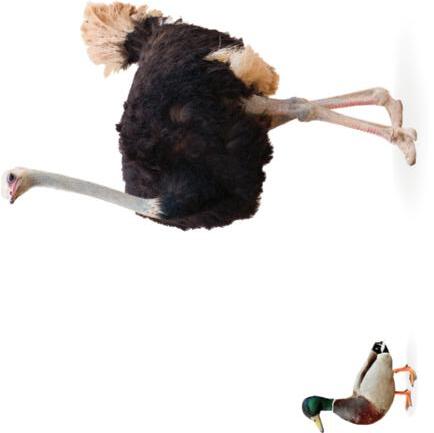
© Great Minds PBC 123 Module 4 ▸ Topic B ▸ FAMILY MATH EUREKA MATH2 PK ▸ M4 ▸ TB M Y C O M P A RI S O N S T O R Y
r o r Shorter? ➁ FOLD ➀ FOLD
Talle



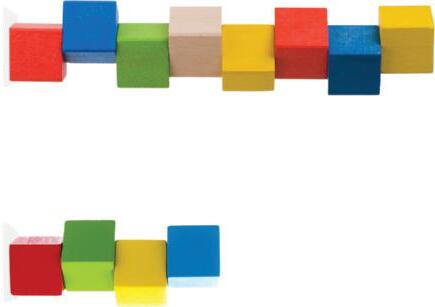
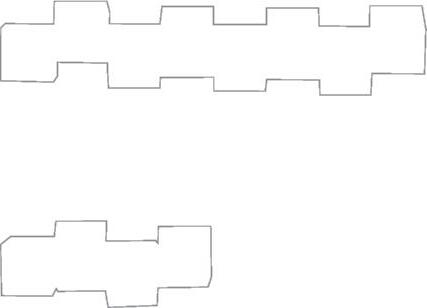

© Great Minds PBC 125 Module 4 ▸ Topic B ▸ FAMILY MATH EUREKA MATH2 PK ▸ M4 ▸ TB
➀
➁ FOLD
FOLD
FAMILY MATH
Compare Weights
Dear Family,
Students learn vocabulary that allows them to be more precise in their description of objects. They practice using comparative statements such as heavier than, lighter than, and about the same weight as to directly compare two objects.


Words We Are Learning
heavy(ier)
light(er)
weight
At-Home Activities
Scavenger Hunt
Students use gestures to help them remember new math words.
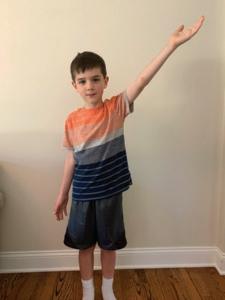
Choose a household item such as a marker. Ask your child to find different household items for each of the following questions:
• Can you find something that is heavier than the marker?
• Can you find something lighter than the marker?
• Can you find something that is about the same weight as the marker?
Mini-book
Look at Heavier or Lighter? with your child (provided with this letter). As you look at the book together, ask your child questions such as the following:
• What do you notice about the seesaw? Tell me about the weight of the .
• Is heavier or lighter? How do you know?
How do you know the is heavier than the ?
Heavier or Lighter?
© Great Minds PBC 127 Module 4 Topic C
Heavier Lighter
MY C O M PA RI S O N S TO RY
For an additional challenge, invite your child to share items that would be even heavier or lighter than the objects in the pictures.
Comparing Weights
Young students use their senses to perceive measurable attributes. They begin to understand weight by connecting language to the pressure they feel on their bodies. A familiar experience of trying to lift something heavy such as a stack of books, compared with lifting something much lighter, such as a feather, provides context to their learning.
As students explore the weight of objects, they will discover that some comparisons are more difficult to make. Items that feel about the same in our hands are more challenging to compare. In response, students are introduced to the balance scale. This mathematical tool provides a clear way for students to compare the weight of two objects and determine which is heavier and which is lighter.

Literature Connection
Consider reading the following books about weight. Reading can help your child make connections and spark conversations about their learning. These books may be available at your local library or online.
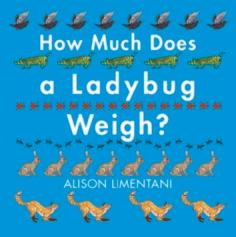


 by Ann Tompert
by Ann Tompert
PK ▸ M4 ▸ TC EUREKA MATH2 © Great Minds PBC 128 FAMILY MATH ▸ Module 4 ▸ Topic C
by Alison Limentani by Alison Limentani by Alison Jay
EUREKA MATH2 PK ▸ M4 ▸ TC © Great Minds PBC 129 Module 4 ▸ Topic C ▸ FAMILY MATH Heavie r o r Lighter? M Y C O M P A RI S O N S T O R Y ➁ FOLD ➀ FOLD
EUREKA MATH2 PK ▸ M4 ▸ TC © Great Minds PBC 131 Module 4 ▸ Topic C ▸ FAMILY MATH ➁
➀
FOLD
FOLD
EUREKA MATH2 PK ▸ M4 ▸ TC ▸ Lesson 11 ▸ Weight Comparison Cards © Great Minds PBC 133
HEAVIER LIGHTER
FAMILY MATH Compare Sets




Dear Family,
Students explore strategies to compare the number of objects in two groups. They practice using the words more and fewer in their comparisons.
Word We Are Learning
more
At-Home Activities
Compare Snacks
When your child is eating different snacks, ask them to compare the number of items in each snack group.
• Do you have more pretzels or more peanuts? How could you check?

• Are there fewer carrots or fewer grapes?
Mini-book
Look at Which Group Has More? with your child (provided with this letter). As you look at the book together, ask your child questions such as the following:

• (Point to a group.) How many are there?
• Which group has more? Fewer?
• Are there more or more ?
• Are there fewer or fewer ?
There are 4 pigs in the mud. There are 3 ducks in the pond. There are more pigs than ducks. There are fewer ducks than pigs.
You have 5 pretzels and 3 peanuts. Do you have more pretzels or more peanuts?
Which Group Has More?
© Great Minds PBC 135 Module 4 Topic D
MY C O M PA RI S O N S TO RY
Comparison Strategies
One-to-one matching is a reliable way to compare the number of items in two groups. Children can tell which group has more objects when they see a group with “extras,” or items that were not matched with items from the other group.
Counting is also reliable when comparing the number of items in two groups because it allows children to make comparisons even when the items in the groups cannot be handled and organized, such as in pictures. 6


5
Literature Connection
Consider reading the following books about counting and comparing. Reading can help your child make connections and spark conversations about their learning. These books may be available at your local library or online.
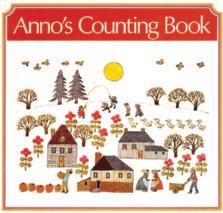

 by Mitsumasa Anno by Alice Brière-Haquet by Roseanne Greenfield Thong
by Mitsumasa Anno by Alice Brière-Haquet by Roseanne Greenfield Thong
PK ▸ M4 ▸ TD EUREKA MATH2 © Great Minds PBC 136 FAMILY MATH ▸ Module 4 ▸ Topic D
Which Group Has More?
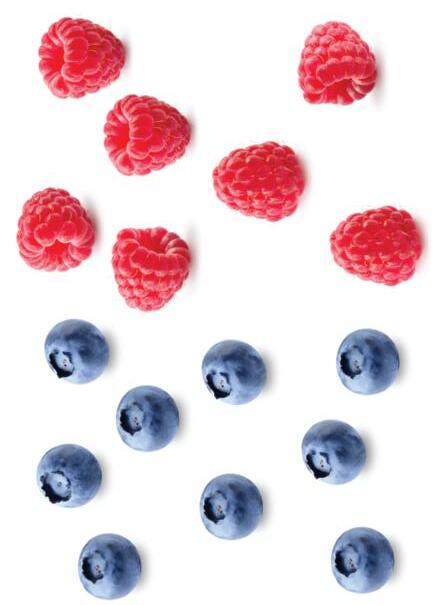
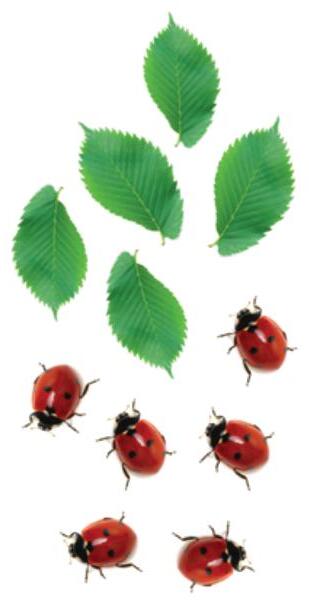
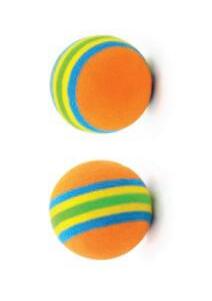
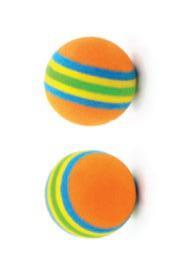


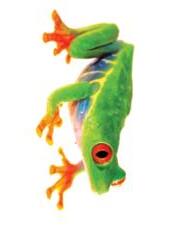
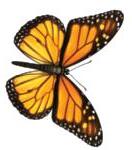
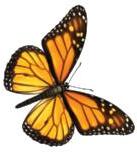

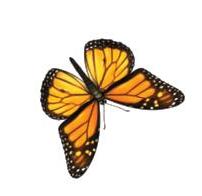
EUREKA MATH2 PK ▸ M4 ▸ TD © Great Minds PBC 137 Module 4 ▸ Topic D ▸ FAMILY MATH M Y C O M P A RI S O N S T O R Y
➁ FOLD ➀ FOLD




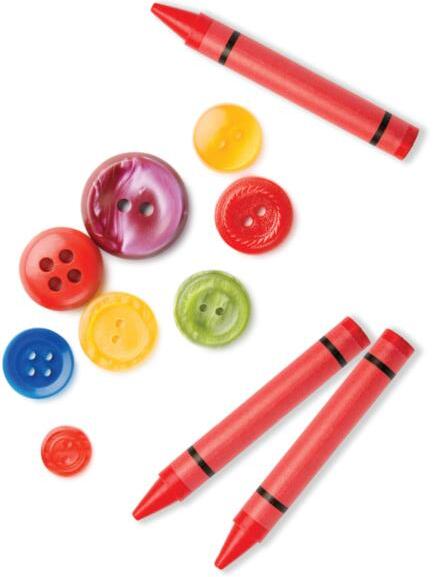
EUREKA MATH2 PK ▸ M4 ▸ TD © Great Minds PBC 139 Module 4 ▸ Topic D ▸ FAMILY MATH ➁
➀
FOLD
FOLD
EUREKA MATH2 PK ▸ M4 ▸ TD ▸ Lesson 14 ▸ Farm Scene © Great Minds PBC 141
FAMILY MATH
Reason About Comparisons
Dear Family,
Students focus on comparisons to tell which group has more or which group has less. They organize data to compare the data. Some students may explore comparisons by using numbers, thinking about how much a container holds (capacity), or by thinking about how many tiles cover a rectangle (area).
Word We Are Learning
The water bottle is tall and heavy. The tissue box is short and light.
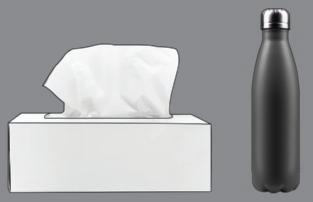
At-Home Activities
Sorting Toys
The picture of crayons gives students a lot of information, which mathematicians call data. First, students can notice and wonder about what the picture shows. Then, they can ask and answer questions about the information.
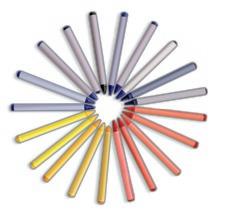
Invite your child to sort their toys in different ways, such as by height, length, weight, or number.
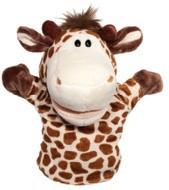
• How can we sort the toys?
• Can we make a group of tall toys? A group of short toys?
• Which toys are heavy? Which toys are light?
• How many toys are in this group?
How Many Scoops?
Gather various sizes of plastic bowls, cups, buckets, or other containers. Invite your child to fill these containers with water, sand, rice, or beans by using a scoop. Begin by choosing two containers to fill. Ask questions such as the following:
• How many scoops do you think will fill each bowl?
• How many scoops did it take to fill each bowl?
• Which bucket or cup holds more? Which holds less?
My red bowl has 7 scoops. My blue bowl has 8 scoops. 7 is less than 8.
© Great Minds PBC 143 Module 4 Topic E
less
Using Numbers to Explore Area
In the following sample, students use square tiles to cover two rectangles. They count the squares in each rectangle to compare them. Students discover that both rectangles are the same size. Each rectangle is covered by 10 square tiles.

Literature Connection
Consider reading the following books about measurement. Reading can help your child make connections and spark conversations about their learning. These books may be available at your local library or online.
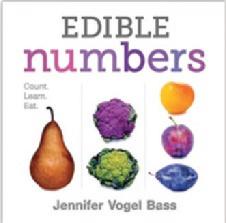


 by
by
PK ▸ M4 ▸ TE EUREKA MATH2 © Great Minds PBC 144 FAMILY MATH ▸ Module 4 ▸ Topic E
Galia Bernstein by Jen Arena by Ana Crespo by Jennifer Vogel Bass
Name
Cover the shapes with squares.
EUREKA MATH2 PK ▸ M4 ▸ TE ▸ Lesson 20 © Great Minds PBC 145
20
A Story of Units® How Many? ▸ PK LEARN Module 1 Module 2 Module 3 Module 4 Module 5 Module 6
and Counting Shapes
and Patterns
to Compare Math Stories Math in Play
Sorting
Parts
Ways
FAMILY MATH
Use the Count Sequence to Add and Subtract 1
Dear Family,
Students learn to use the count sequence to show the pattern of 1 more or 1 less in stories, songs, and artwork. They begin to connect counting forward with addition and counting backward with subtraction. For example, when we add 1, we say the next number in the count sequence. When we take away 1, we say the previous number in the count sequence.
There are 3 apples on the top shelf. Add 1 more apple to the top shelf. How many apples are on the top shelf now?
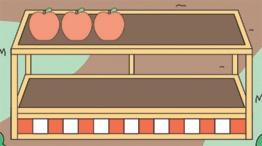
At-Home Activities
How Many Now?
Students use the familiar number stairs to practice counting backward from 5.
Invite your child to solve simple story problems. Consider the following scenarios:
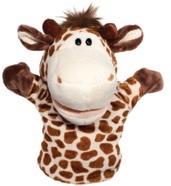
• Set out 4 crackers. Ask, “How many crackers will you have if you eat 1 cracker?”
• Place 2 carrots on the plate. Ask, “How many carrots will you have if you put 1 more carrot on the plate?”
• Build a tower with blocks. Ask, “How many blocks are in the tower?” Add 1 block to the tower. Then ask, “How many blocks are in the tower now?”
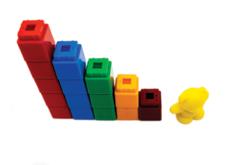
Finger Counting

Invite your child to use their fingers to show 1 more. Begin by asking your child to show 1 more for numbers to 5. If your child is ready, continue showing 1 more to 10, or have your child put 1 finger down to show 1 less. Say, “Show me 1. Pop up 1 finger to show 1 more. How many fingers are you showing now?”
How many will there be if I add 1 more?
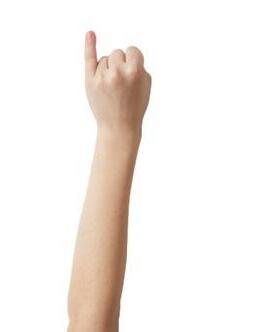
© Great Minds PBC 149 Module 5 Topic A
Modeling Story Problems

Work with story problems is foundational to understanding the relationship between addition and subtraction. During this work, students draw to recreate and make sense of the story in the problem. When students make sense of the story, they do not need to look for key words, such as more and less, to know whether they should add or subtract. Key words can be misleading and detract from students’ overall understanding of the problem.
In prekindergarten, students begin to learn the difference between art and math drawings. Art takes time and includes details, but math drawings are simple and quick. Math drawings help keep students’ work efficient and organized.

Literature Connection
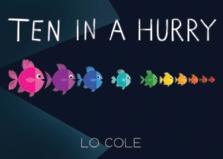
Consider reading the following books about the count sequence. Reading can help your child make connections and spark conversations about their learning. These books may be available at your local library or online.
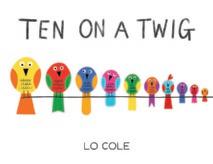


150 PK ▸ M5 ▸ TA EUREKA MATH2 FAMILY MATH ▸ Module 5 ▸ Topic A © Great Minds PBC
by Cathryn Falwell by Philemon Sturges by Lo Cole by Lo Cole
Math Drawing
Art Drawing
EUREKA MATH2 PK ▸ M5 ▸ TA ▸ Lesson 2 ▸ Log Scene © Great Minds PBC 151
EUREKA MATH2 PK ▸ M5 ▸ TA ▸ Lesson 5 ▸ Market Scene © Great Minds PBC 153
FAMILY MATH Represent Addition Stories
Dear Family,
Students learn to solve simple addition problems and use number sentences to represent their thinking. Rather than focusing on using the specific operation of addition, students think about the meaning of the problem’s story: Is something being added? Taken away? Students use the familiar story structure of beginning, middle, and end to model what happens when they add more to a group or put groups together. They also explore many different ways to represent addition by using concrete objects and drawings.
Words We Are Learning
At-Home Activities
Addition Stories
There are 5 geckos clinging to the window and 3 geckos hiding in a tree. How many geckos are there?
We can use different tools, such as our fingers, a rekenrek, or a number path, to show the story in different ways, but the same number sentence tells us about the story. 5 and 3 make 8.
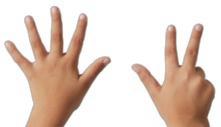
3 and 2 make 5. You can add !

Make up addition stories during everyday experiences. For example, while your child is coloring, say, “You have 3 crayons on the table. Here are 2 more crayons. How many crayons do you have now?”
Mini-book
Look at Addition Stories with your child (provided with this letter). As you look at the book together, ask your child questions such as the following:
• What addition story can we tell about the picture?

• How many at first? Then what happened?
• How many altogether?
© Great Minds PBC 155 Module 5 Topic B
add draw
Addition Stories MY MATH STORY
Math Drawings
Students are learning the difference between art and math drawings. Art drawings focus on details and take much more time. Math drawings are simple and quick and are an efficient way for students to keep track of information. The following is an example of a math drawing.
4
2 2
Literature Connection
We can draw 2 little hands for the soft claps and 2 big hands for the loud claps. 2 and 2 make 4.
Consider reading the following books about addition and counting. Reading can help your child make connections and spark conversations about their learning. These books may be available at your local library or online.
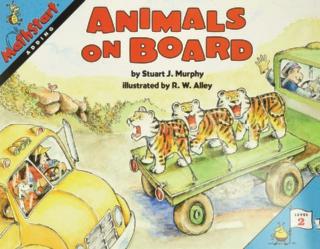

 by Caroline Stills by Julie Flett by Stuart J. Murphy
by Caroline Stills by Julie Flett by Stuart J. Murphy
156 PK ▸ M5 ▸ TB EUREKA MATH2 © Great Minds PBC
FAMILY MATH ▸ Module 5 ▸ Topic B
EUREKA MATH2 PK ▸ M5 ▸ TB © Great Minds PBC 157 Module 5 ▸ Topic B ▸ FAMILY MATH Addition Stories MY MATH STORY ➁ FOLD ➀ FOLD
EUREKA MATH2 PK ▸ M5 ▸ TB © Great Minds PBC 159 Module 5 ▸ Topic B ▸ FAMILY MATH ➁ FOLD ➀
FOLD
EUREKA MATH2 PK ▸ M5 ▸ TB ▸ Lesson 6 ▸ Prehistoric Scene © Great Minds PBC 161
FAMILY MATH
Compose and Decompose Numbers in More than One Way

Dear Family,
Students learn to use objects and pictures to sort in multiple ways. They see that the same number can be broken apart in more than one way as they record multiple sorts. For example, 5 can be broken apart into groups of 1 and 4; 3 and 2; 5 and 0; or 2, 1, and 2. This foundational skill of knowing how numbers can be broken up in different ways will help children beyond prekindergarten. 2 + 1 + 2 = 5
We can sort the apples by color and write a number sentence. 2 and 1 and 2 make 5.
Yellow Red Green
At-Home Activities
Shake Those Coins
Gather 5 pennies and place them in a cup. Ask your child to shake and spill the coins. Count the coins that are heads up and those that are tails up. Once your child has practiced with 5 coins, repeat by using 6 to 10 coins.
Nature Walk
Take a walk or drive with your child. Create stories with objects you find outside. For example, “I see 3 big rocks and 2 small rocks. How many rocks are there?” Give your child time to count the rocks to find and tell how many they see.
5 heads up and 0 tails up! 5 and 0 make 5.
© Great Minds PBC 163 Module 5 Topic C
2 1 2
Partners to 2, 3, 4, and 5
Students have sorted objects since the beginning of prekindergarten. Now, objects and pictures are sorted in multiple ways and each sort is recorded in a number sentence.
When students find ways to break apart a number into two parts, they find partners to that number. For example, 1 and 3 are partners that make 4. Finding and recording all the partners to a number help students see the various ways that the number can be broken apart.
There are 4 turtles. We can make 4 in more than one way:
1 is big. 3 are small. 1 and 3 make 4.
2 are hiding in their shells. 2 are standing up. 2 and 2 make 4.
0 are in the pond. 4 are in the grass. 0 and 4 make 4.
Literature Connection
Consider reading the following books about counting patterns and shapes. Reading can help your child make connections and spark conversations about their learning. These books may be available at your local library or online.
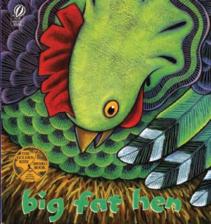
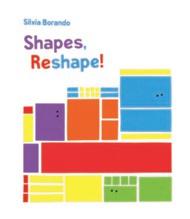 by JaNay Brown-Wood by Silvia Borando by Mem Fox by Keith Baker
by JaNay Brown-Wood by Silvia Borando by Mem Fox by Keith Baker
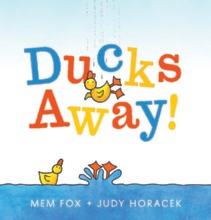
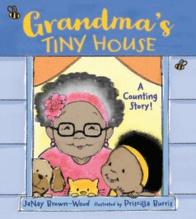
PK ▸ M5 ▸ TC EUREKA MATH2 © Great Minds PBC 164 FAMILY MATH ▸ Module 5 ▸ Topic C
EUREKA MATH2 PK ▸ M5 ▸ TC ▸ Lesson 11 ▸ Shake Those Beans © Great Minds PBC 165
FAMILY MATH Represent Subtraction Stories
Dear Family,
Students learn to solve simple subtraction problems and to use number sentences to represent their thinking (e.g., 6 take away 2 is 4). Students use the familiar story structure of beginning, middle, and end to model what happens when they take away part of a group. They also explore many ways to represent subtraction by using objects, fingers, and drawings.
Word We Are Learning
subtract
At-Home Activities
Subtraction Stories
We can show numbers on our fingers the math way. Then we can hide, or take away, some fingers to understand taking away as a type of subtraction. 5 fingers take away 1 finger is 4 fingers.


Make up subtraction stories during everyday experiences. While your child is coloring, say, “You have 3 crayons on the table. If I use 2 of your crayons, how many crayons will you still have?”
Mini-book
Look at Subtraction Stories with your child (provided with this letter). As you look at the book together, ask your child questions such as the following:
• What subtraction story can we say about the picture?

• How many at first? Then what happened?
• How many now?
You can subtract!
3 take away 2 is 1.
MY MATH STORY
Subtraction Stories
© Great Minds PBC 167 Module 5 Topic D
Subtraction Number Sentences
As students transition to subtraction, they focus their attention on the action of taking away. They model what is happening in the story by using objects, fingers, and drawings and then say the number sentence to match their thinking. As they say the number sentence to match the story, students see that taking away part of an existing group results in a smaller group. For example, “I had 5 watermelon slices. I ate 3 of them. Now, there are 2 watermelon slices. 5 take away 3 is 2.” take away is .
Literature Connection
Consider reading the following books about counting patterns. Reading can help your child make connections and spark conversations about their learning. These books may be available at your local library or online.
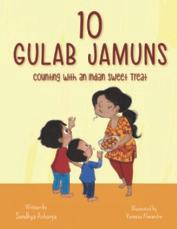
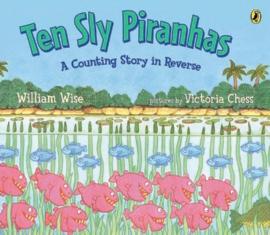 by Lo Cole by William Wise by Sandhya Acharya
by Lo Cole by William Wise by Sandhya Acharya
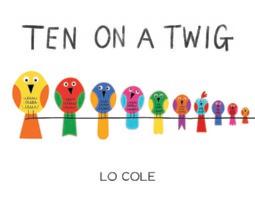
PK ▸ M5 ▸ TD EUREKA MATH2 © Great Minds PBC 168 FAMILY MATH ▸ Module 5 ▸ Topic D
— =
© Great Minds PBC 169 EUREKA MATH2 PK ▸ M5 ▸ TD Module 5 ▸ Topic D ▸ FAMILY MATH MY MATH STORY
➁ FOLD ➀ FOLD
Subtraction Stories
© Great Minds PBC 171 EUREKA MATH2 PK ▸ M5 ▸ TD Module 5 ▸ Topic D ▸ FAMILY MATH
➀
➁ FOLD
FOLD
EUREKA MATH2 PK ▸ M5 ▸ TD ▸ Lesson 15 ▸ Shipwreck Scene © Great Minds PBC 173
FAMILY MATH
Extend and Create Patterns
Dear Family,
Students learn to extend and create their own patterns in a variety of ways—through building, drawing, music, and movement. Students learn that patterns repeat and use this understanding to predict what comes next. Students also use ordinal number concepts and words such as first, next, and last to describe patterns.
We can create a pattern. First person in line, touch your head. Next person, touch your hips. Next person, touch your toes.
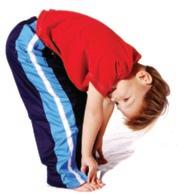

At-Home Activities
Create Patterns
We can use the pattern orange square-green triangle-green triangle to create a movement pattern. Let’s clap for the orange square and jump for the green triangles.
Invite your child to create a pattern. Consider the following ideas:

• Movement patterns: clap-clap-jump, clap-clap-jump …
• Household materials: bean-pasta-bean, bean-pasta-bean …
• Drawing patterns: circle-square, circle-square …
• Toy patterns: red block-blue block-green block …
What Comes Next?
What part is repeating in your pattern?
Build a pattern by using household items, such as dried beans and pasta. It might look like bean-bean-pasta, bean-bean-pasta. Encourage your child to keep the pattern going. Ask the following questions to practice using ordinal numbers and words:

• What comes first?
• What comes next?
• Point to the object that is third.
© Great Minds PBC 175 Module 5 Topic E
Counting Collections
Throughout the prekindergarten year, students organize, count, and record collections of objects. Counting collections can be assembled by using materials easily found in classrooms or homes. Buttons, beans, bottle caps, pom-poms, erasers, craft sticks, crayons … Almost anything can be part of a counting collection. Each collection can be placed in a resealable bag or container. Consider using counting collections at home to support counting skills. As your child counts, ask the following questions:

• How many? Can you count your collection again so I can listen to you count?
• How will you show the things you counted on paper? What will you draw or write?
• Does your drawing match your collection? How do you know?
• What if I put 1 more in your bag? How many would you have then?
Literature Connection
Consider reading the following books about ordinal numbers, counting, and patterns. Reading can help your child make connections and spark conversations about their learning. These books may be available at your local library or online.
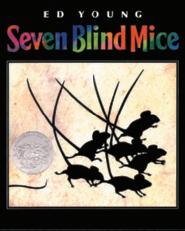
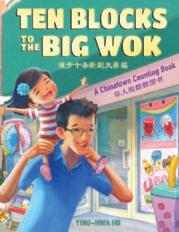
 by Eric Carle by Ed Young by Ying-Hwa Hu
by Eric Carle by Ed Young by Ying-Hwa Hu
PK ▸ M5 ▸ TE EUREKA MATH2 © Great Minds PBC 176 FAMILY MATH ▸ Module 5 ▸ Topic E
Name Finish the patterns.
EUREKA MATH2 PK ▸ M5 ▸ TE ▸ Lesson 21 © Great Minds PBC 177 21
R B B B B R R R B B B R R R R R R
A Story of Units® How Many? ▸ PK LEARN Module 1 Module 2 Module 3 Module 4 Module 5 Module 6
and Counting Shapes
and Patterns
to Compare Math Stories Math in Play
Sorting
Parts
Ways
FAMILY MATH Project: Create a Business

Dear Family, Projects are designed for prekindergarten students to playfully engage with math content. In Project A, students learn about different types of businesses in their community, and they create a class store. Students explore and apply some of the big ideas of prekindergarten mathematics as they gather, sort, and count items for a classroom store.

Students create a bar graph as they
Students collect items for the store. vote for a classroom business. They sort and count store items.
Students trace or write numbers as they As students pay for store items, they count make a price tag for each store item. out pennies to match a written number.



© Great Minds PBC 181 Module 6 Topic A
At-Home Activities
Grocery Store Counting
As you visit the grocery store, look for opportunities for your child to count, such as the following:
• Encourage your child to count items as they go into the shopping cart.

• After checking out, ask your child to count the number of shopping bags.
Pretend Restaurant
We need 4 oranges. Can you count 4 oranges and put them in the cart?
Invite your child to create a restaurant play area at home. Consider the following ideas:
• Ask your child to make a menu by drawing pictures and tracing or writing a number next to each item to show the cost.
• Use pennies to pay for menu items. As an alternative to using real pennies, have your child cut out the large pennies provided with this letter. Invite your child to count out pennies to match the prices on the menu.
Literature Connection
Consider reading the following books about sorting and counting. Reading can help your child make connections and spark conversations about their learning. These books may be available at your local library or online.
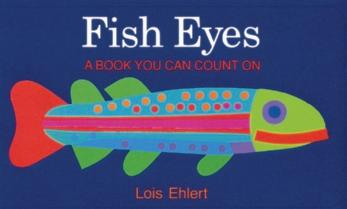



PK ▸ M6 ▸ Project A EUREKA MATH2 © Great Minds PBC 182 FAMILY MATH ▸ Module 6 ▸ Project A
by Christopher Danielson
by Emmett Alexander by Marisabina Russo by Lois Ehlert






EUREKA MATH2 PK ▸ M6 ▸ Project A ▸ Pennies © Great Minds PBC 183 Module 6 ▸ Project A ▸ FAMILY MATH






EUREKA MATH2 PK ▸ M6 ▸ Project A ▸ Pennies © Great Minds PBC 185 Module 6 ▸ Project A ▸ FAMILY MATH
Dear Family,
Our class needs the following items for our class store. Please look at the list to see if you can provide any of them. We recommend sending items that can be donated elsewhere after the project is over.
EUREKA MATH2 PK ▸ M6 ▸ Project A ▸ Family Letter © Great Minds PBC 187








EUREKA MATH2 PK ▸ M6 ▸ Project A ▸ Price Tags © Great Minds PBC 189


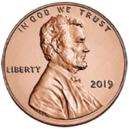
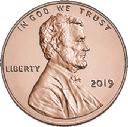




EUREKA MATH2 PK ▸ M6 ▸ Project A ▸ Price Tags © Great Minds PBC 191

EUREKA MATH2 PK ▸ M6 ▸ Project A ▸ Price Tags © Great Minds PBC 193
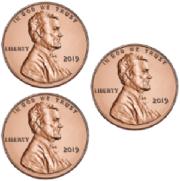
EUREKA MATH2 PK ▸ M6 ▸ Project A ▸ Invitation © Great Minds PBC 195 You Are Invited! Please visit our classroom business! We are excited to share our project with you.
Who: Where: When:
FAMILY MATH Project: Plan a Celebration
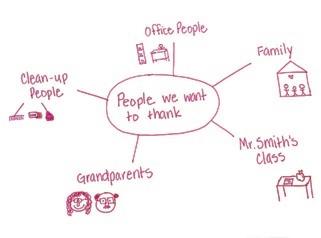

Dear Family,
Projects are designed for prekindergarten students to playfully engage with math content. In Project B, students use math to plan a celebration for a community group they want to acknowledge and thank. Students explore and apply some of the big ideas of prekindergarten mathematics as they plan and prepare for a community group celebration.
Students work together to create a web. Students create and extend shape and color They use the web to select a community patterns as they make decorations and gifts, or even group to celebrate. as they dance! They use ordinal words such as first, next, and last to describe positions in the pattern.
Students count out a set of plates, cups, Students count to make sets equal, and they or napkins from a larger group. determine if they have enough, too many, or too few.

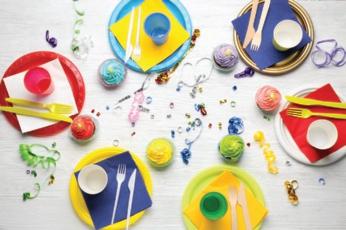
© Great Minds PBC 197 Module 6 Topic B
At-Home Activities Community Walk
Take a walk around your neighborhood or local park. On a dry-erase board or in a notebook, encourage your child to make tally marks or dots to represent the number of trees, birds, or flowers they see. Remind your child to make a diagonal line for the fifth tally mark.
Gratitude Gifts
Invite your child to create a drawing or homemade gift for a family or community member. Consider the following ideas:

• Create jewelry, such as a necklace or bracelet, by using pasta or beads.
• Cut out and glue shapes to create a picture.

Literature Connection
How can we show 5 using tally marks?
Consider reading the following books about patterns, counting, and comparing. Reading can help your child make connections and spark conversations about their learning. These books may be available at your local library or online.


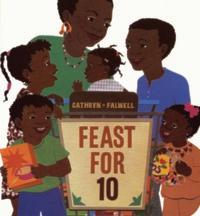
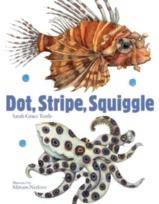
© Great Minds PBC 198 FAMILY MATH ▸ Module 6 ▸ Project B PK ▸ M6 ▸ Project B EUREKA MATH2
by Sarah Grace Tuttle by Cathryn Falwell by Lizzy Rockwell by Ana Crespo
EUREKA MATH2 PK ▸ M6 ▸ Project B ▸ Community Members © Great Minds PBC 199 Draw a picture of community members.
We want to find out what people in our community like to do at celebrations. The student may use the pictures to remember the questions to ask you, or they may ask you to read them. The student should draw a picture to make note of your answer.
What kinds of snacks do you like?
What do you like to do? What makes you happy?
EUREKA MATH2 PK ▸ M6 ▸ Project B ▸ Community Member Questionnaire © Great Minds PBC 201
EUREKA MATH2 PK ▸ M6 ▸ Project B ▸ Number Recipe to 10 © Great Minds PBC 203
Number Recipe to 10 9 8 7 6 5 4 3 2 1 0 10
FAMILY MATH Project: Care for Our Space
Dear Family,
Projects are designed for prekindergarten students to playfully engage with math content. In Project C, students learn about recycling and conserving, and they choose an area in their school building to care for. Students explore and apply some of the big ideas of prekindergarten mathematics as they care for the area they chose.


Students vote for an area to care for by using Students use water bottles to measure cubes. The class counts the cubes or the length of objects in their classroom. compares the height of the towers to determine which area got the most votes.
Students engage in a whole-class counting Students talk about data as collection activity by using the caps they they notice and wonder about collect from recycling water bottles. the soap bottles.

© Great Minds PBC 205 Module 6 Topic C
At-Home Activities
Add and Subtract with Plastic Caps
Save plastic caps from various bottles. Encourage your child to create and solve addition and subtraction problems by using the caps. Consider using the following examples:
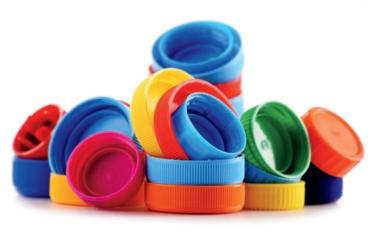
• I have 2 red caps and 2 green caps. I have 4 caps altogether.
• I have 5 caps. If I take away 4 caps, there’s 1 cap left.
Home Recycling Station
Consider using a plastic bin, cardboard box, or paper bag to collect recyclables. Encourage your child to sort the recyclables by material, such as paper, plastic, and metal, and to count and compare the number of items in each group.
Literature Connection
Consider reading the following books about addition and comparing sizes of objects. Reading can help your child make connections and spark conversations about their learning. These books may be available at your local library or online.



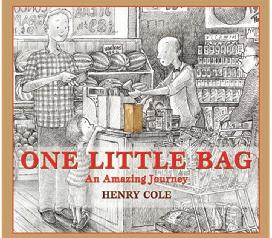
How many things are in the plastic group? Which group has the most?
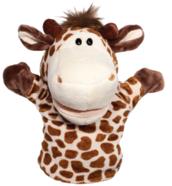
© Great Minds PBC 206 PK ▸ M6 ▸ Project C EUREKA MATH2 FAMILY MATH ▸ Module 6 ▸ Project C
by Henry Cole by Neil Flory by Caroline Stills by Ruth Krauss
EUREKA MATH2 PK ▸ M6 ▸ Project C ▸ School Grounds Walk © Great Minds PBC 207 Draw a place in our school that needs care.
Guess how many water bottles long each object in your classroom is. Then measure and write the exact measurement.
Guess Measurement
Guess Measurement
EUREKA MATH2 PK ▸ M6 ▸ Project C ▸ Water Bottle Measuring Recording Sheet © Great Minds PBC 209
EUREKA MATH2 PK ▸ M6 ▸ Project C ▸ Water Bottle Measuring Recording Sheet © Great Minds PBC 211
Guess Measurement
Credits
Great Minds® has made every effort to obtain permission for the reprinting of all copyrighted material. If any owner of copyrighted material is not acknowledged herein, please contact Great Minds for proper acknowledgment in all future editions and reprints of this module.
Common Core State Standards for Mathematics © Copyright 2010 National Governors Association Center for Best Practices and Council of Chief State School Officers. All rights reserved.
All United States currency images Courtesy the United States Mint and the National Numismatic Collection, National Museum of American History.
For a complete list of credits, visit http://eurmath.link/media-credits.
Cover, Jacob Lawrence (1917–2000), In the North the Negro had better educational facilities, 1940–1941. Panel 58 from The Migration Series. Casein tempera on hardboard, 12” x 18” (30.5 x 45.7 cm). Gift of Mrs. David M. Levy. The Museum of Modern Art. © 2020 The Jacob and Gwendolyn Knight Lawrence Foundation, Seattle/Artists Rights Society (ARS), New York. Digital Image © The Museum of Modern Art/Licensed by SCALA/Art Resource, NY; pages 7, 9, 19, 23, 29, 33, 39, 47, 49, 59, 61, 71, 85, 101, 105, 109, 117, 127, 135, 143, 149, 155, 163, 167, 175, 182, 198, 206, The Clay Machine Gun/Shutterstock; page 8, Book cover of Sort It By Size by Emmett Alexander, courtesy Gareth Stevens Publishing, Book cover of A Pair of Socks by Stuart J. Murphy, courtesy HarperCollins, Book cover of Same, Same but Different by Jenny Sue Kostecki-Shaw, Courtesy Macmillan; page 9, Eric Isselee/Shutterstock; page 10, © 1988 Paul Giganti, Jr. and Donald Crews, Book cover of How Many? by Christopher Danielson, Courtesy Stenhouse Publishing and Charlesbridge Publishing, Book cover of “Ten Black Dots” by Donald Crews, courtesy Greenwillow Books, Book cover of ICKY BUG SHAPES by Jerry Pallotta, illustrated by Shennen Bersani. Text copyright © 2004 by Jerry Pallotta. Illustrations copyright © 2004 by Shennen Bersani. Used by permission of Scholastic Inc.; page 13, (top left, composite image) grey_ and/Shutterstock, Yarrbush/Shutterstock, (top right, composite image) Eric Isselee/Shutterstock, EstudiosOMH/Shutterstock, (bottom left, composite image) Tim UR/Shutterstock, Subject Photo/ Shutterstock, (bottom right, composite image) Eric Isselee/Shutterstock, Litvalifa/Shutterstock; page 15, (top left, composite image) Super Prin/Shutterstock, AN NGUYEN/Shutterstock, (top right, composite image) Anna Kucherova/Shutterstock, kb-photodesign/Shutterstock, (bottom left, composite image) EstudiosOMH/Shutterstock, Tim UR/Shutterstock, (bottom right, composite image) Happy Author/ Shutterstock, Nenov Brothers Images/Shutterstock; page 20, Book cover of “Zero Is the Leaves on the Tree” by Betsy Franco, courtesy Scholastic, Book cover of Rooster’s Off to See the World by Eric Carle, Courtesy Simon & Schuster, front cover art from One Was Johnny by Maurice Sendak. Copyright © 1962, 1990 by Maurice Sendak. Used by permission of HarperCollins Publishers, Book cover of Zin! Zin! Zin! A Violin by Lloyd Moss, Courtesy Simon & Schuster; page 24, Courtesy Houghton Mifflin Harcourt/ HarperCollins Publishers, Book cover of “Fish Eyes” by Lois Ehlert, courtesy Clarion Books, Book cover of Count and See by Tana Hoban, Courtesy Simon & Schuster; page 30, Courtesy Arbordale Publishing, Courtesy Penguin Random House, Book cover of “Five Creatures” by Emily Jenkins, courtesy of Square Fish; page 31, Lubava/Shutterstock; page 33, (composite image) Super Prin/Shutterstock, Eric Isselee/ Shutterstock, Sashkin/Shutterstock, Deffia Rachma Larasati/Shutterstock; page 34, Book cover of “Roar!” by Pamela Duncan Edwards, courtesy of HarperCollins Publishers, Book cover of “One is a Pinata”
EUREKA MATH2 PK © Great Minds PBC 213
by Roseanne Greenfield Thong,
courtesy Chronicle Books, Book cover of “Feast for 10” by Cathryn Falwell, courtesy HMH Books for Young Readers, front cover art from One Was Johnny by Maurice Sendak. Copyright © 1962, 1990 by Maurice Sendak. Used by permission of HarperCollins Publishers; page 35, (top left, composite image) Super Prin/Shutterstock, Vladimirkarp/Shutterstock, loskutnikov/ Shutterstock, (top right, composite image) Super Prin/Shutterstock, Eric Isselee/Shutterstock, Sashkin/ Shutterstock, Deffia Rachma Larasati/Shutterstock, (bottom left, composite image) Jo Ann Snover/ Shutterstock, mylisa/Shutterstock, (bottom right, composite image) yanikap/Shutterstock, Deffia Rachma Larasati/Shutterstock; page 37, (top left, composite image) bigacis/Shutterstock, E3D/ Shutterstock, (top right, composite image) Eric Isselee/Shutterstock, Sashkin/Shutterstock, (bottom right, composite image) Becky Stares/Shutterstock, losw/Shutterstock, (bottom right) Tim UR/Shutterstock; page 40, Book cover of Have You Seen My Duckling? by Nancy Tafuri, Courtesy Greenwillow Books, Book cover of The Line Up Book by Marisabina Russo, Courtesy Greenwillow Books, Book cover of “Anno’s Counting Book” by Mitsumasa Anno, Courtesy Crowell; page 48, Book cover of Rosie’s Walk by Pat Hutchins, Courtesy Simon & Schuster, Inside Outside Upside Down by Stan Berenstain and Jan Berenstain, courtesy Penguin Random House, Me on the Map by Joan Sweeney, courtesy Penguin Random House; page 49, Paul Klee (1879-1940), Castle and Sun, 1928 (no. 201). Private Collection/ Bridgeman Images. © 2022 Artists Rights Society (ARS), New York; page 50, Book cover of Brown Rabbit’s Shapes by Alan Baker, Courtesy Macmillan, Book cover of Walter’s Wonderful Web by Tim Hopgood, Courtesy Macmillan, Cover from FRIENDSHAPE by Amy Krouse Rosenthal and Tom Lichtenheld. Cover art copyright © 2015 by Tom Lichtenheld. Used by permission of Scholastic Inc; page 55, (top left) Andrej Antic/Shutterstock, (bottom right) Jakub Krechowicz/Shutterstock, (bottom left) shepherdsatellite/ Shutterstock; page 57, (top left) Calypso Photo/Shutterstock, (top right) Ivonne Wierink/Shutterstock, (bottom left) Stuart Monk/Shutterstock, (bottom right) Studio Light and Shade/Shutterstock; page 60, From ‘Round Is a Tortilla’ ©2013 by Roseanne Thong Illustrations by John Parra. Used with permission of Chronicle Books LLC, San Francisco. ChronicleBooks.com, Book cover of “Mouse Shapes” by Ellen Stoll Walsh, courtesy HMH, Book cover of “The Shape of Things” by Dayle Ann Dodds and illustrated by Julie Lacome, courtesy Candlewick Press; page 62, Book cover of Tangled: A Story About Shapes by Anne Miranda, Courtesy Simon & Schuster; Book cover of Boxitects by Kim Smith, Courtesy Clarion Books; Book cover of Jack the Builder by Stuart J. Murphy, Courtesy HarperCollins; page 63, (top left) Sashkin/ Shutterstock, (bottom right) Ivonne Wierink/Shutterstock; page 65, (top right) Abramova Elena/ Shutterstock, (bottom left) Pawel Horazy/Shutterstock, (bottom right) Africa Team/Shutterstock; page 72, Book cover of “Ten Black Dots” by Donald Crews, courtesy Greenwillow Books; From Press Here © 2011 Hervé Tullet. Used with permission from Chronicle Books, LLC. Visit www.ChronicleBooks.com; Cover only from Round by Joyce Sidman, illustrated by Taeeun Yoo. Cover art Copyright ©2017 by Yoo Taeeun. Used by permission of HarperCollins Publishers; pages 85, (composite) Becky Stares/Shutterstock, M. Unal Ozmen/Shutterstock; page 86, Cover only from Missing Mittens by Stuart J. Murphy, illustrated by G. Brian Karas. Illustrations copyright ©2001 by G. Brian Karas. Used by permission of HarperCollins Publishers; Cover only from Two Mice by Sergio Ruzzier. Copyright ©2015 by Sergio Ruzzier. Used by permission of HarperCollins Publishers; Book cover of “Quack and Count” by Keith Baker, Courtesy of HarperCollins; Book cover of “Sprout Seed Sprout” by Annika Dunklee and Carey Sookocheff, Courtesy of OwlKids Books; page 87, (top right, composite image) Becky Stares/Shutterstock, M. Unal Ozmen/ Shutterstock, (bottom left) Tim UR/Shutterstock, (bottom right) Becky Stares; page 89, (top left) Lightspring/Shutterstock, (top right) bigacis/Shutterstock, (bottom right) Anastasia/Shutterstock; page 102, Book cover of “We All Count A Book of Cree Numbers” by Julie Flett, Courtesy of Native Northwest; Book cover of “1 Big Salad: A Delicious Counting Book” by Juana Medina, Courtesy of Viking Books; Book
PK EUREKA MATH2 © Great Minds PBC 214
cover of “An Animal Alphabet” by Elisha Cooper, Courtesy of Orchard Books; page 105, ako photography/ Shutterstock; page 106, Book cover of “This is the Nest that Robin Built” by Denise Fleming, Courtesy Beach Lane Books; Book cover of “Spot, Spike, Spiral” by Sarah Grace Tuttle and illustrated by Miriam Nerlove, Courtesy Creative Editions; Book cover of “Dot, Stripe, Squiggle” by Sarah Grace Tuttle and illustrated by Miriam Nerlove, Courtesy Creative Editions; pages 109, 111 (composite image) TKGGP/ Shutterstock, Super Prin/Shutterstock; page 110, Book cover of “Big Bear, Small Mouse” by Karma Wilson, illustrated by Jane Chapman, Courtesy Margaret K. McElderry Books; Cover of “How Big Were Dinosaurs” by Lita Judge, Courtesy Macmillan; Book cover of Big and Small, Room for All by Joann Boggart, Courtesy Penguin Random House; Book cover of “Where’s the Baby” by Britta Teckentrup, Courtesy Big Picture Press; page 117, (bottom left, composite image) Mtsaride/Shutterstock, donatas1205/Shutterstock, ananaline/Shutterstock, Mega Pixel/Shutterstock, (bottom right) Eric Isselee/Shutterstock; page 118, Book cover of “The Short Giraffe” by Neil Cleary, Courtesy Allen and Unwin; Book cover of “Rafa Counts on Papá” by Joe Cepeda, Courtesy Little, Brown Books for Young Readers; Book cover of “How Long Is a Whale” by Alison Limentani, Courtesy Boxer Books; Cover only from The Growing Story by Ruth Krauss, illustrated by Helen Oxenbury. Text copyright © 1947, 1975 by Ruth Kraus. Illustrations copyright © 2007 by Helen Oxenbury. Used by permission of HarperCollins Publishers; page 119, (top left, composite image) AtlasStudio/Shutterstock, Kovaleva_Ka/Shutterstock, (top right, composite image) Mtsaride/Shutterstock, donatas1205/Shutterstock, ananaline/Shutterstock, Mega Pixel/Shutterstock, (bottom left, composite image) Iasha/Shutterstock, RaiDztor/Shutterstock, (bottom right, composite image) Rob Wilson/Shutterstock, Gena73/Shutterstock; page 121, (top left, composite image) Eric Isselee/Shutterstock, bonchan/Shutterstock, (top right) donatas1205/Shutterstock, (bottom left, composite image) SDammer/Shutterstock, Mauro Carli/Shutterstock, (bottom right, composite image) Shutter Baby photo/Shutterstock, Nattasid Thapsang/Shutterstock; page 123, (top left, composite image) Ranbud/Shutterstock, kamomeen/Shutterstock, (top right) Eric Isselee/Shutterstock, (bottom left, composite image) Lev Kropotov/Shutterstock, rangizzz/Shutterstock, (bottom right, composite image) Krakenimages.com/Shutterstock, Aksenova Natalya/Shutterstock; page 125, (top left, composite image) Lifestyle Graphic/Shutterstock, Eric Isselee/Shutterstock, (top right) M. Unal Ozmen/ Shutterstock, (bottom left, composite image) Jiri Hera/Shutterstock, hxdbzxy/Shutterstock, (bottom right, composite image) Engineer studio/Shutterstock, Luciano Mortula – LGM/Shutterstock; page 128, Cover of “Just a Little Bit” by Ann Tompert and illustrated by Lynn Munsinger, Courtesy Clarion Books; Book cover of “How Tall Was a T-Rex” by Alison Limentani, Courtesy Boxer Books; Book cover of “How Much Does a Ladybug Weigh?” by Alison Limentani, Courtesy Boxer Books; Out of the Blue. Illustrations copyright 2014 Alison Jay. First published by Barefoot Books, Inc. in 2014, reproduced with permission from Barefoot Books; page 135, Litvalifa/Shutterstock; page 136, (top, composite image) irin-k/ Shutterstock, Evgeny Meshkov/Shutterstock; page 136, Book cover of “Anno’s Counting Book” by Mitsumasa Anno, Courtesy Crowell; Book cover of “One Very Big Bear” by Alice Brière-Haquet, illustrated by Olivier Philipponneau & Raphaële Enjary, Courtesy Abrams Appleseed; Book cover of “One is a Pinata” by Roseanne Greenfield Thong, courtesy Chronicle Books; page 137, (top left, composite image) Alex Stemmers/Shutterstock, Lightspring/Shutterstock, (top right) Litvalifa/Shutterstock, (bottom left, composite image) irin-k/Shutterstock, Evgeny Meshkov/Shutterstock, (bottom right) Tim UR/ Shutterstock; page 139, (top left, composite image) oksana2010/Shutterstock, Lamax/Alamy Stock Photo, (top right, composite image) Bored Photography/Shutterstock, kevin brine/Shutterstock, (bottom left) Jay Venkat/Shutterstock, (bottom right, composite image) Mtsaride/Shutterstock, Garsya/ Shutterstock; page 143, (composite image) robynleigh/Shutterstock, Lalandrew/Shutterstock; page 144, Book cover of “I Am a Cat” by Galia Bernstein, Courtesy Abrams Books for Young Readers; Book
EUREKA MATH2 PK © Great Minds PBC 215
cover of “Marta! Big and Small” by Jen Arena, Courtesy Macmillan; Book cover of “Lia & Luis: Who Has More?” by Ana Crespo, Courtesy Charlesbridge; Book cover of “Edible Numbers: Count, Learn, Eat” by Jennifer Vogel Bass, Courtesy Roaring Brook Press; page 150, Book cover of “Turtle Splash! A Countdown at the Pond” by Cathryn Falwell, Courtesy Greenwillow Books; Book cover of “Ten Flashing Fireflies” by Philemon Sturges and illustrated by Anna Vojtech, Courtesy NorthSouth Books; Book cover of “Ten on a Twig” by Lo Cole, Courtesy Sourcebooks Jabberwocky; Book cover of “Ten in a Hurry” by Lo Cole, Courtesy Sourcebooks Jabberwocky; page 156, Book cover of “Mice Mischief: Math Facts in Action” by Caroline Stills, illustrated by Judith Rossell, Courtesy Holiday House; Book cover of “We All Play” by Julie Flett, Courtesy Greystone Books; Book cover of Animals on Board by Stuart J. Murphy illustrated by R.W. Alley, Courtesy HarperCollins; page 164, Grandma’s Tiny House Text copyright © 2017 by JaNay Brown-Wood Illustrations copyright © 2017 by Priscilla Burris. Used with permission by Charlesbridge Publishing, Inc., 9 Galen Street, Suite 220, Watertown, MA 02472, (617) 926-0329, www.charlesbridge. com. All rights reserved; Book cover of “Shapes Reshape” by Silvia Borando, Courtesy Candlewick; Book cover of “Ducks Away” by Mem Fox, illustrated by Judy Horacek. Courtesy Scholastic Press; Book cover of “Big Fat Hen” by Keith Baker, Courtesy Clarion Books; page 168, Book cover of “Ten on a Twig” by Lo Cole, Courtesy Sourcebooks Jabberwocky; Book cover of “Ten Sly Piranhas” by William Wise, illustrated by Victoria Chess, Courtesy Puffin Books; Book cover of “10 Gulab Jamuns: Counting with an Indian Sweet Treat” by Sandhya Acharya, illustrated by Vanessa Alexandre, Courtesy Mascot Books; page 175, (left) Syda Productions/Shutterstock, (center) michaeljung/Shutterstock, (right) Cindy Minear/ Shutterstock; page 176, Book cover of “10 Little Rubber Ducks” by Eric Carle, Courtesy Harper Collins; Book cover of “Seven Blind Mice” by Ed Young, Courtesy Puffin Books; Ten Blocks to the Big Wok. Text copyright © 2022 by Ying-Hwa Hu. Illustrations copyright © 2022 by Ying-Hwa Hu. Permission arranged with Children’s Book Press, an imprint of LEE & LOW BOOKS Inc., New York, NY 10016. All rights reserved. Learn more at leeandlow.com; page 181, sockagphoto/Shutterstock; page 181, Book cover of ‘Sort It by Size’ by Emmett Alexander, courtesy Gareth Stevens Publishing; Book cover of How Many? by Christopher Danielson, Courtesy Stenhouse Publishing and Charlesbridge Publishing; Book cover of The Line Up Book by Marisabina Russo, Courtesy Greenwillow Books; Book cover of “Fish Eyes” by Lois Ehlert, courtesy Clarion Books; page 197, (top right) Elena Kudryavtseva/Shutterstock, (bottom left) Africa Studio/Shutterstock, (bottom right) Nogwish/Shutterstock; page 198, Book cover of “Dot, Stripe, Squiggle” by Sarah Grace Tuttle and illustrated by Miriam Nerlove, Courtesy Creative Editions; Book cover of “Feast for 10” by Cathryn Falwell, courtesy HMH Books for Young Readers; Book cover of “The AllTogether Quilt” by Lizzy Rockwell, Courtesy Knopf Books for Young Readers; Book cover of “Lia & Luis: Who Has More?” by Ana Crespo, Courtesy Charlesbridge; page 205, (top right) Theerasak Tammachuen/ Shutterstock, (bottom left) benokky1972/Shutterstock, (bottom right) vertolena/Shutterstock; page 206, (top) Monticello/Shutterstock; page 206, Book cover of “One Little Bag: An Amazing Journey” by Henry Cole, Courtesy Scholastic; Book cover of “The Short Giraffe” by Neil Cleary, Courtesy Allen and Unwin; Book cover of “Mice Mischief: Math Facts in Action” by Caroline Stills, illustrated by Judith Rossell, Courtesy Holiday House; Cover only from The Growing Story by Ruth Krauss, illustrated by Helen Oxenbury. Text copyright © 1947, 1975 by Ruth Kraus. Illustrations copyright © 2007 by Helen Oxenbury. Used by permission of HarperCollins Publishers; All other images are the property of Great Minds.
PK EUREKA MATH2 © Great Minds PBC 216
Acknowledgments
Beth Barnes, Melissa Benner, Lauren Brown, Dawn Burns, Mary Christensen-Cooper, Dr. Hazel Coltharp, Katie Cummings, Cheri DeBusk, Stephanie DeGiulio, Jill Diniz, Melissa Elias, Lacy Endo-Peery, Kimberly Hager, Brittney Hawkins, Kelly Kagamas Tomkies, Kate McGill Austin, Shelley Petre, John Reynolds, Lori Sponenburgh, Janel Verrilli, Philippa Walker, Lisa Watts Lawton, MaryJo Wieland Ana Alvarez, Lynne Askin-Roush, Trevor Barnes, Brianna Bemel, Carolyn Buck, Lisa Buckley, Adam Cardais, Christina Cooper, Kim Cotter, Lisa Crowe, Jessica Dahl, Brandon Dawley, Cherry dela Victoria, Delsena Draper, Sandy Engelman, Tamara Estrada, Ubaldo Feliciano-Hernández, Soudea Forbes, Jen Forbus, Liz Gabbard, Diana Ghazzawi, Lisa Giddens-White, Laurie Gonsoulin, Adam Green, Dennis Hamel, Cassie Hart, Sagal Hassan, Kristen Hayes, Marcela Hernandez, Abbi Hoerst, Libby Howard, Elizabeth Jacobsen, Ashley Kelley, Lisa King, Sarah Kopec, Drew Krepp, Cindy Medici, Ivonne Mercado, Sandra Mercado, Brian Methe, Patricia Mickelberry, Mary-Lise Nazaire, Corinne Newbegin, Tara O’Hare, Max Oosterbaan, Tamara Otto, Christine Palmtag, Laura Parker, Katie Prince, Gilbert Rodriguez, Todd Rogers, Karen Rollhauser, Neela Roy, Gina Schenck, Amy Schoon, Aaron Shields, Leigh Sterten, Mary Sudul, Lisa Sweeney, Tracy Vigliotti, Dave White, Charmaine Whitman, Glenda Wisenburn-Burke, Howard Yaffe
EUREKA MATH2 PK © Great Minds PBC 217
MATH IS EVERYWHERE
Do you want to compare how fast you and your friends can run?
Or estimate how many bees are in a hive?
Or calculate your batting average?
Math lies behind so many of life’s wonders, puzzles, and plans. From ancient times to today, we have used math to construct pyramids, sail the seas, build skyscrapers—and even send spacecraft to Mars.
Fueled by your curiosity to understand the world, math will propel you down any path you choose.
Ready to get started?
ISBN 978-1-63898-842-7
Module 1
Sorting and Counting
Module 2
Shapes
Module 3
Parts and Patterns
Module 4
Ways to Compare
Module 5
Math Stories
Module 6
Math in Play
What does this painting have to do with math?
The American artist Jacob Lawrence is known for his portrayals of everyday African American life. His Migration Series is painted in a modernist style, contrasting vivid colors with shades of brown and black. Lawrence’s work shows the discrimination African Americans faced and the opportunities they found, such as the educational opportunities depicted in panel 58. What are the students writing? Why are they writing numbers?
On the cover
Panel 58 from The Migration Series, 1940–1941
Jacob Lawrence, American, 1917–2000
Casein tempera on hardboard
The Museum of Modern Art, New York, NY, USA
Jacob Lawrence (1917–2000), In the North the Negro had better educational facilities, 1940–1941. Panel 58 from The Migration Series. Casein tempera on hardboard, 12 x 18 in (30.5 x 45.7 cm). Gift of Mrs. David M. Levy. The Museum of Modern Art, New York, NY, USA. © 2020 The Jacob and Gwendolyn Knight Lawrence Foundation, Seattle/Artists Rights Society (ARS), New York. Digital image © The Museum of Modern Art/Licensed by SCALA/Art Resource, NY
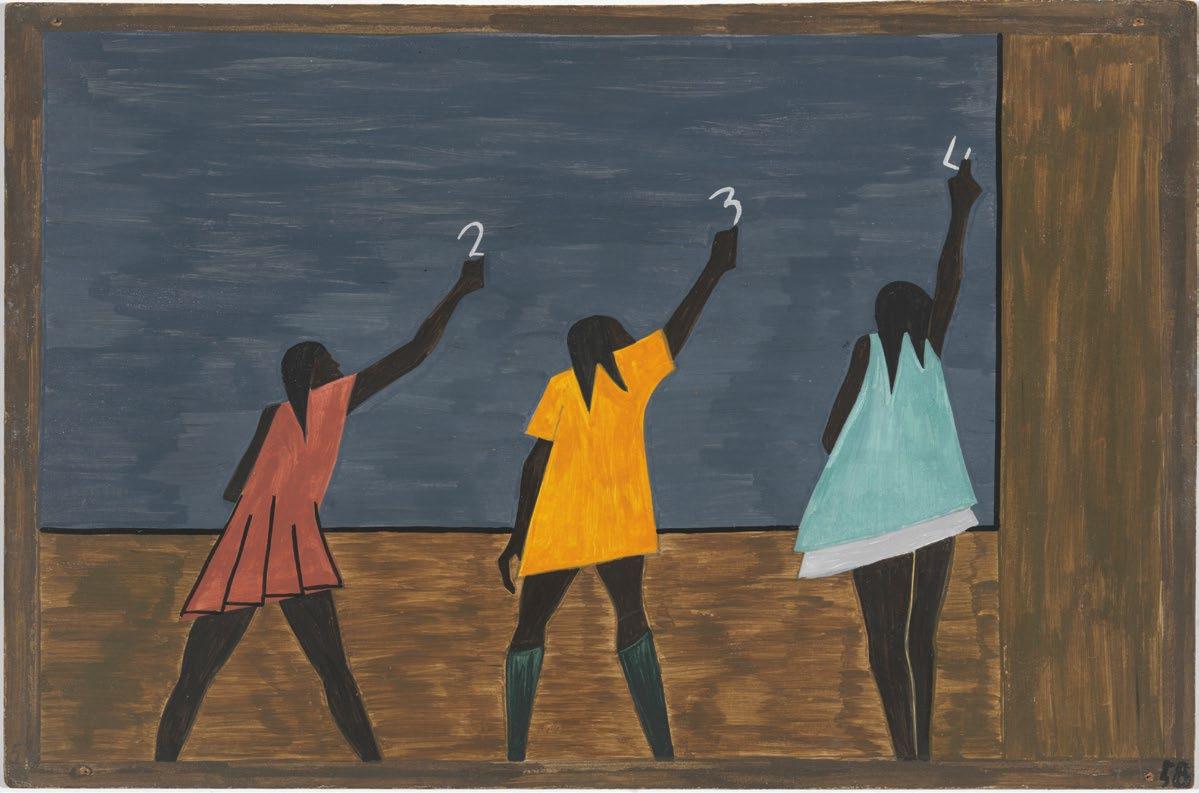
781638 988427
9
A










 by Emmett Alexander
by Stuart J. Murphy by Jenny Sue Kostecki-Shaw
by Emmett Alexander
by Stuart J. Murphy by Jenny Sue Kostecki-Shaw








 Paul Giganti, Jr. by Christopher by Donald Crews by Jerry Pallotta Danielson
Paul Giganti, Jr. by Christopher by Donald Crews by Jerry Pallotta Danielson

























































 by Betsy Franco by Eric Carle by Maurice by Lloyd Moss Sendak
by Betsy Franco by Eric Carle by Maurice by Lloyd Moss Sendak






 by Ellen Stoll Walsh
by Lois Ehlert by Tana Hoban
by Ellen Stoll Walsh
by Lois Ehlert by Tana Hoban



 by Barbara Mariconda by Marthe Jocelyn
by Emily Jenkins
by Barbara Mariconda by Marthe Jocelyn
by Emily Jenkins




 “1, 2, 3, 4, 5"
by Pamela Duncan by Roseanne Greenfield by Cathryn Falwell by Maurice Edwards Thong Sendak
“1, 2, 3, 4, 5"
by Pamela Duncan by Roseanne Greenfield by Cathryn Falwell by Maurice Edwards Thong Sendak






























































 by Nancy Tafuri by Marisabina Russo by Mitsumasa Anno
by Nancy Tafuri by Marisabina Russo by Mitsumasa Anno


 by Pat Hutchins by Stan and by Joan Sweeney Jan Berenstain
by Pat Hutchins by Stan and by Joan Sweeney Jan Berenstain


















 by Roseanne Greenfield by Ellen Stoll Walsh by Dayle Ann Dodds Thong
by Roseanne Greenfield by Ellen Stoll Walsh by Dayle Ann Dodds Thong































 by Donald Crews by Hervé Tullet by Joyce Sidman
by Donald Crews by Hervé Tullet by Joyce Sidman






 by Stuart J. Murphy by Sergio Ruzzier by Keith Baker by Annika Dunklee and Carey Sookocheff
by Stuart J. Murphy by Sergio Ruzzier by Keith Baker by Annika Dunklee and Carey Sookocheff





























 by Denise Fleming by Sarah Grace Tuttle by Sarah Grace Tuttle
by Denise Fleming by Sarah Grace Tuttle by Sarah Grace Tuttle






 by Karma Wilson by Lita Judge by Jo Ellen Bogart by Britta Teckentrup
by Karma Wilson by Lita Judge by Jo Ellen Bogart by Britta Teckentrup










 by Neil Flory by Joe Cepeda by Alison Limentani by Ruth Krauss
by Neil Flory by Joe Cepeda by Alison Limentani by Ruth Krauss


























 by Ann Tompert
by Ann Tompert








 by Mitsumasa Anno by Alice Brière-Haquet by Roseanne Greenfield Thong
by Mitsumasa Anno by Alice Brière-Haquet by Roseanne Greenfield Thong






















 by
by















 by Caroline Stills by Julie Flett by Stuart J. Murphy
by Caroline Stills by Julie Flett by Stuart J. Murphy

 by JaNay Brown-Wood by Silvia Borando by Mem Fox by Keith Baker
by JaNay Brown-Wood by Silvia Borando by Mem Fox by Keith Baker




 by Lo Cole by William Wise by Sandhya Acharya
by Lo Cole by William Wise by Sandhya Acharya







 by Eric Carle by Ed Young by Ying-Hwa Hu
by Eric Carle by Ed Young by Ying-Hwa Hu
































